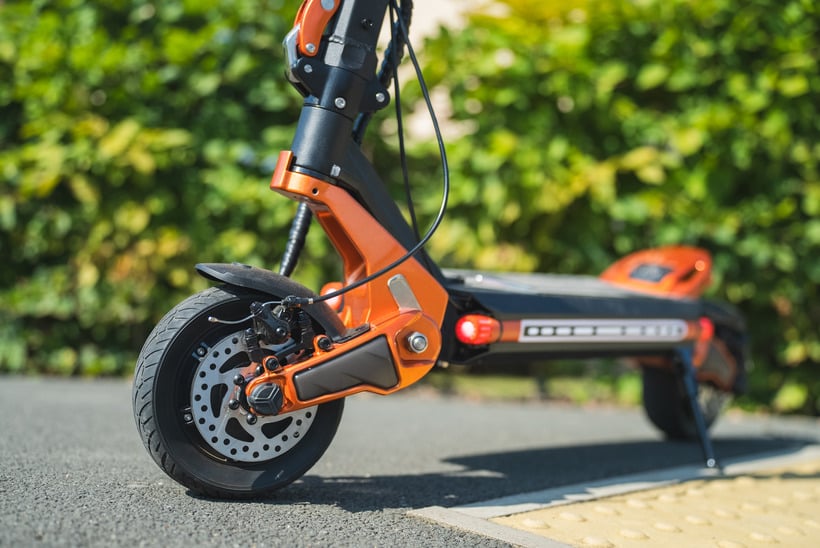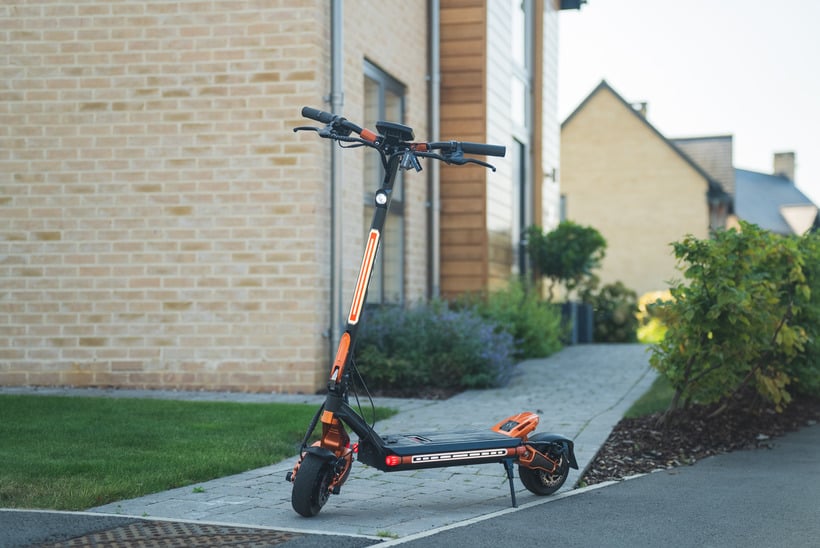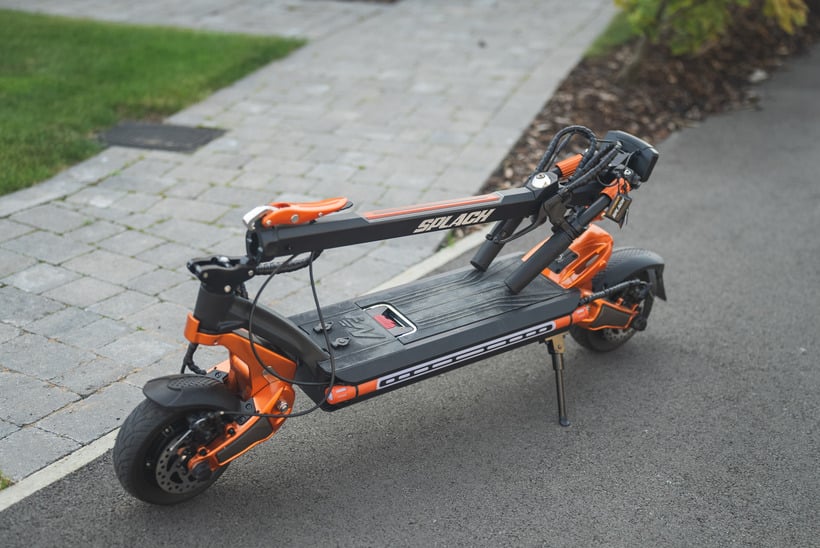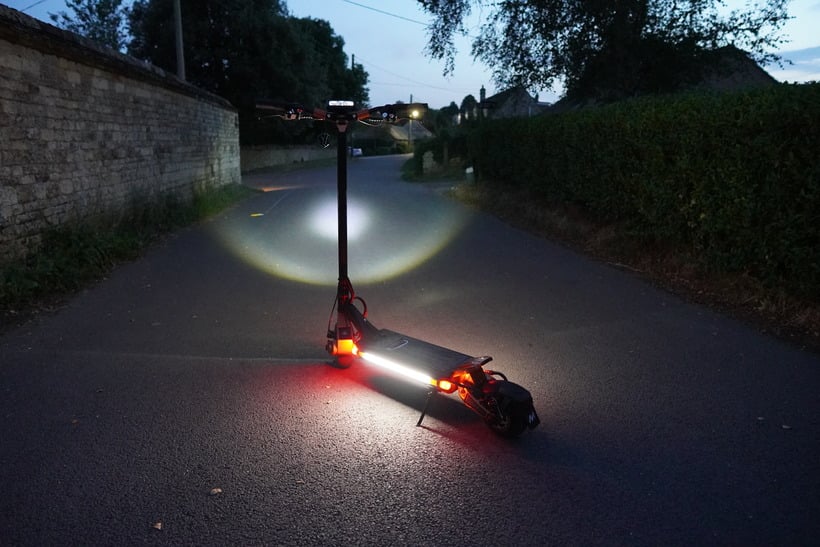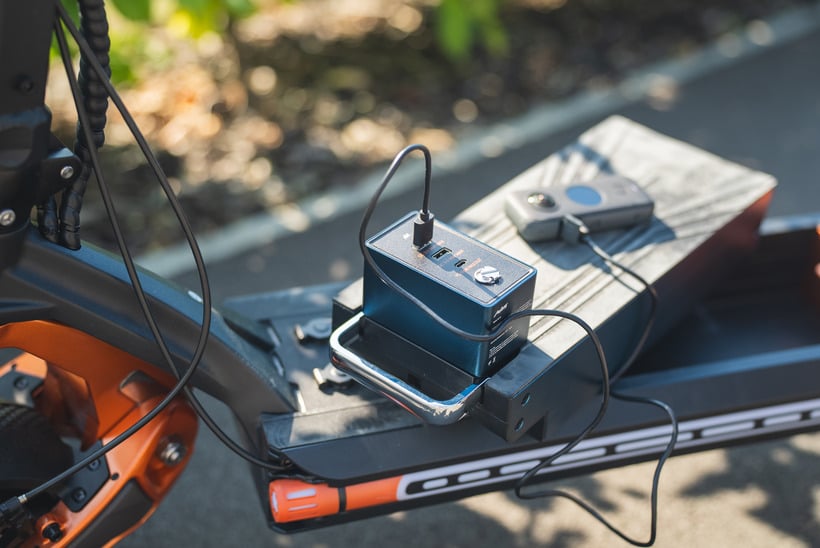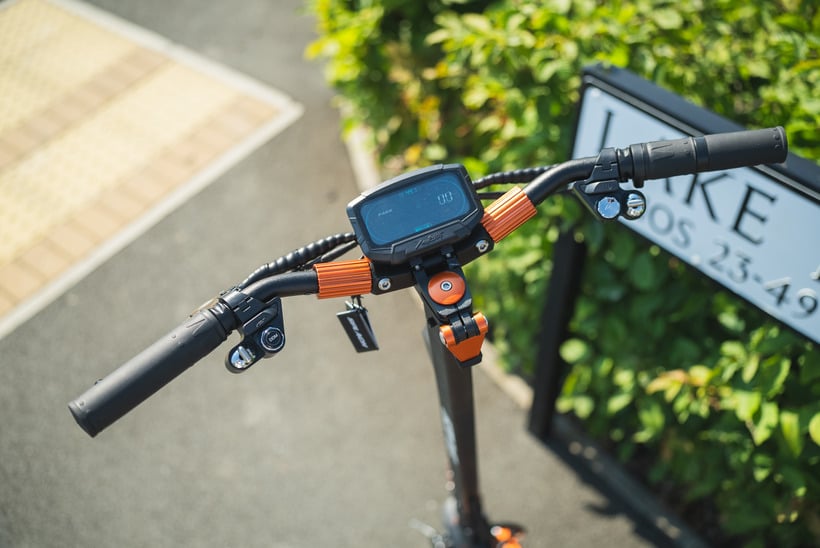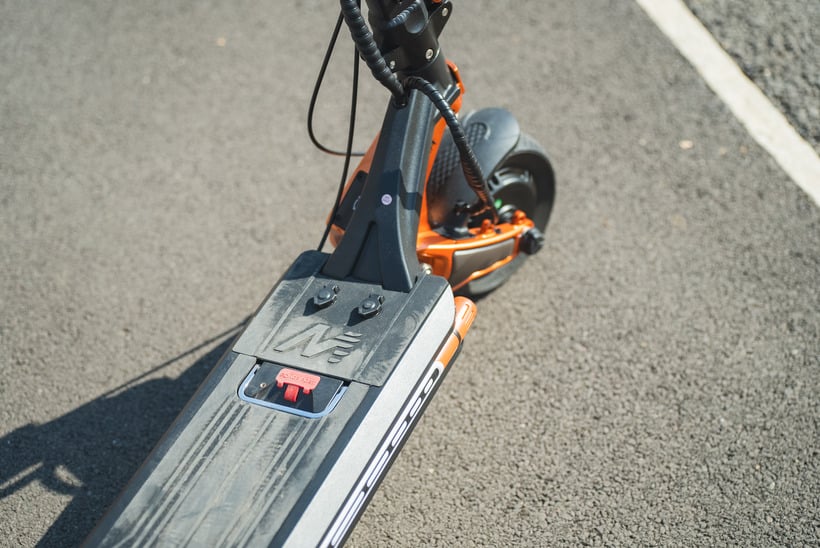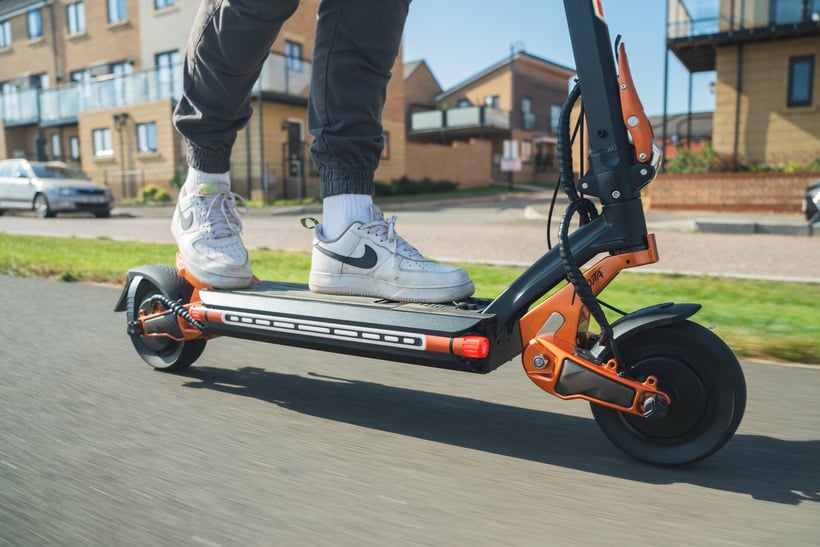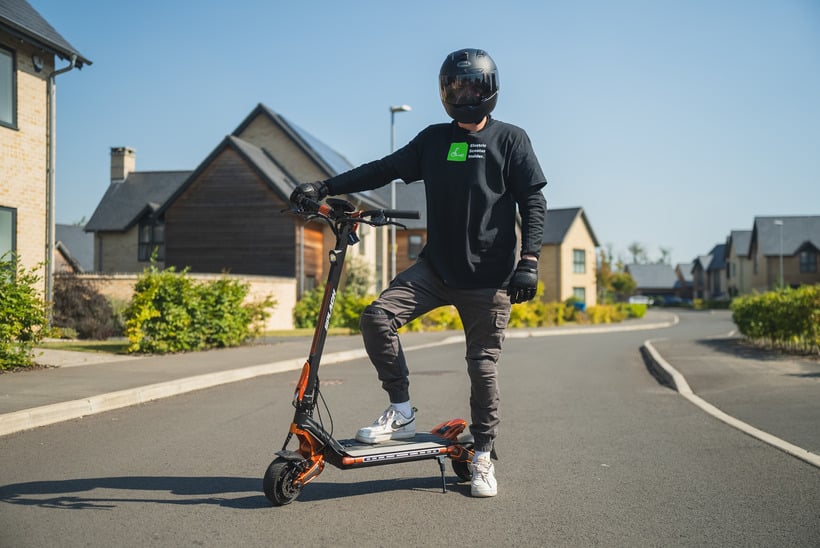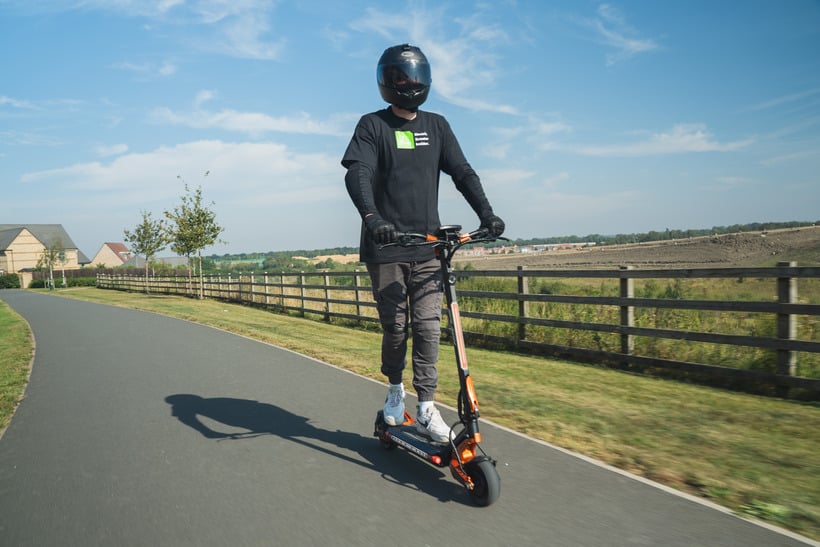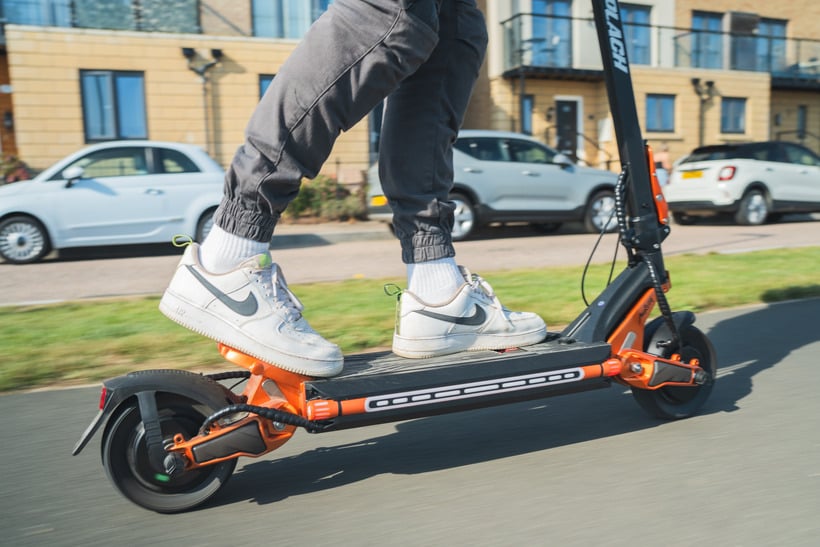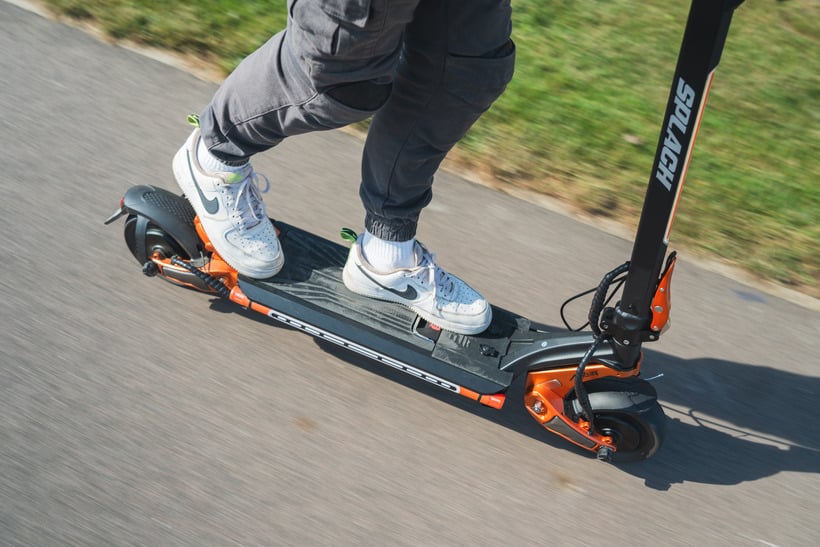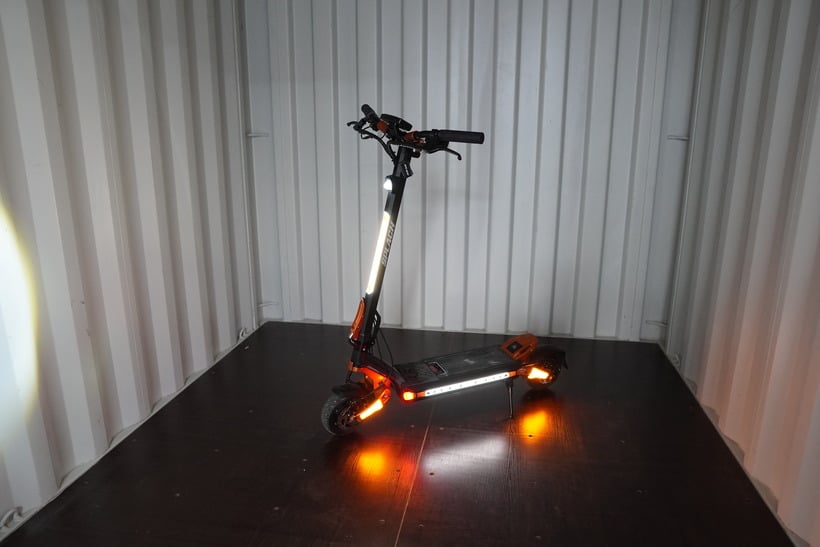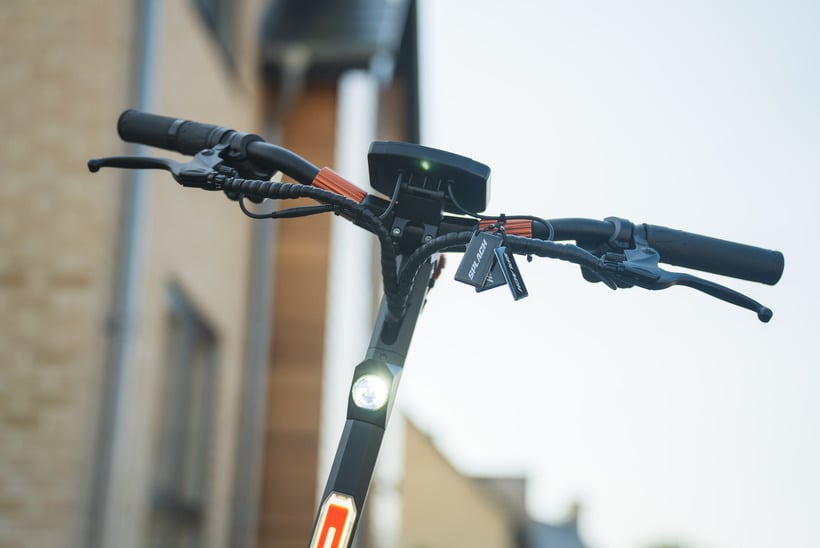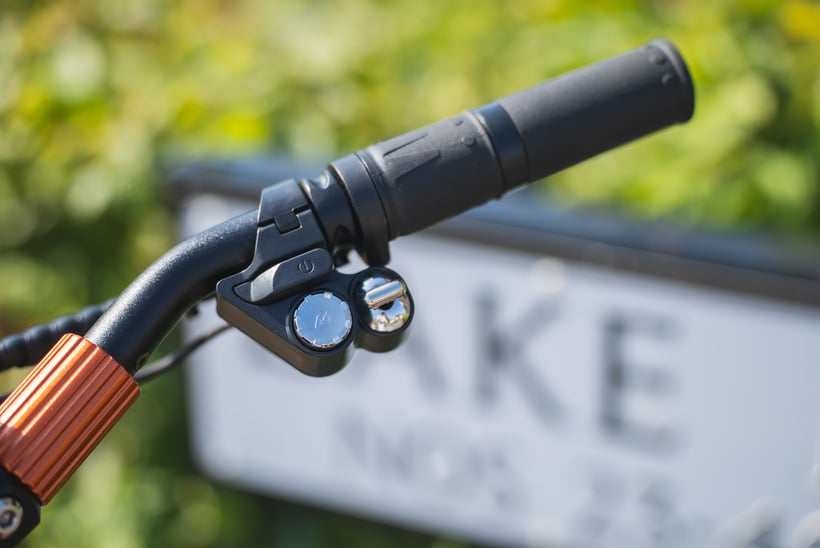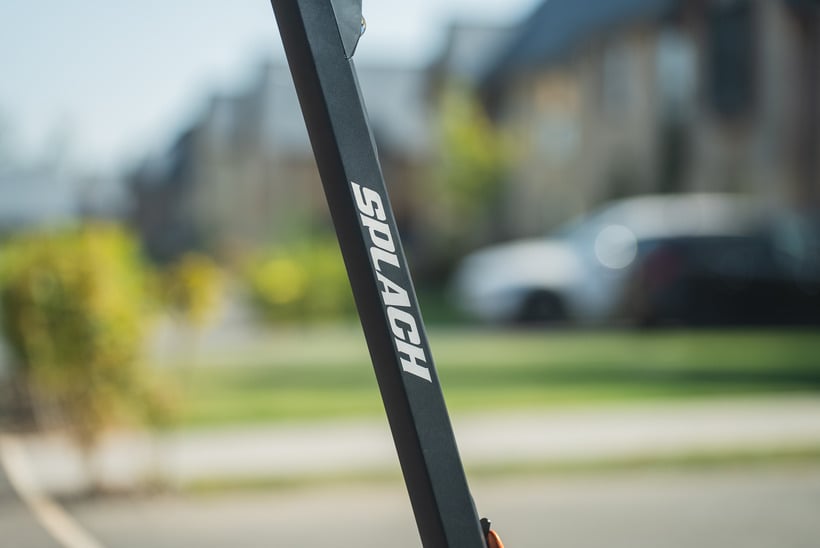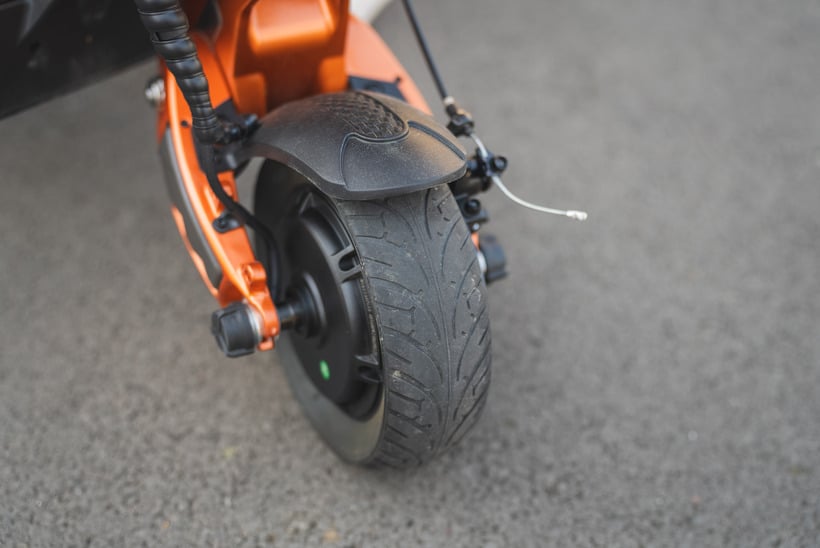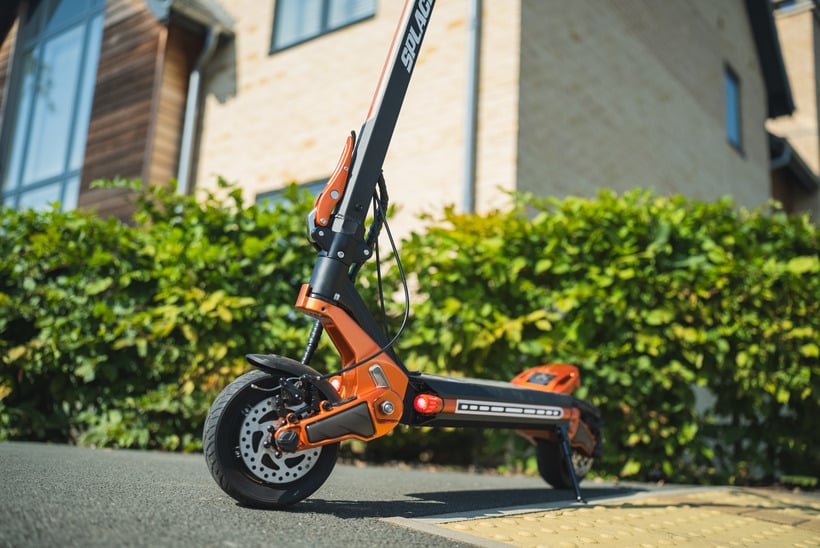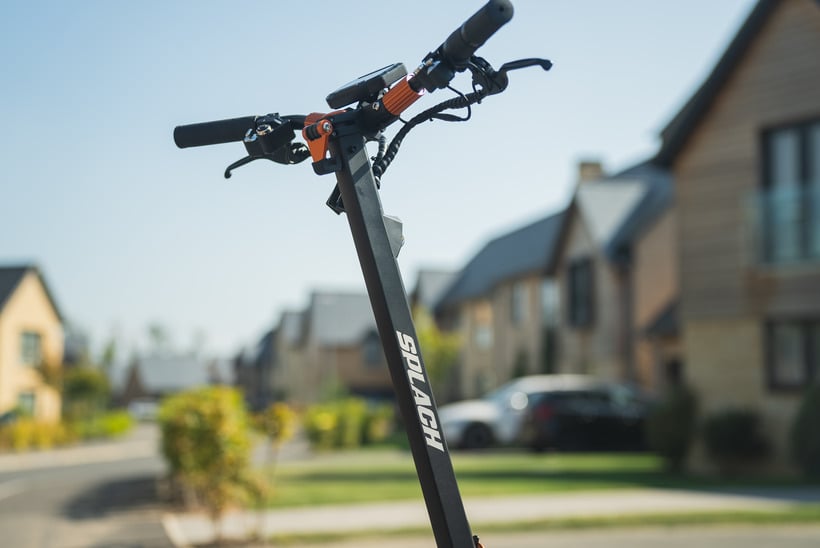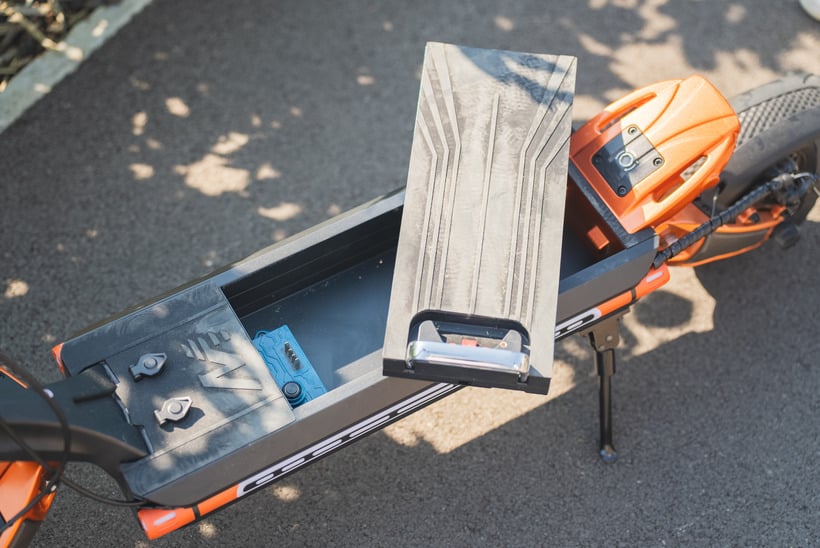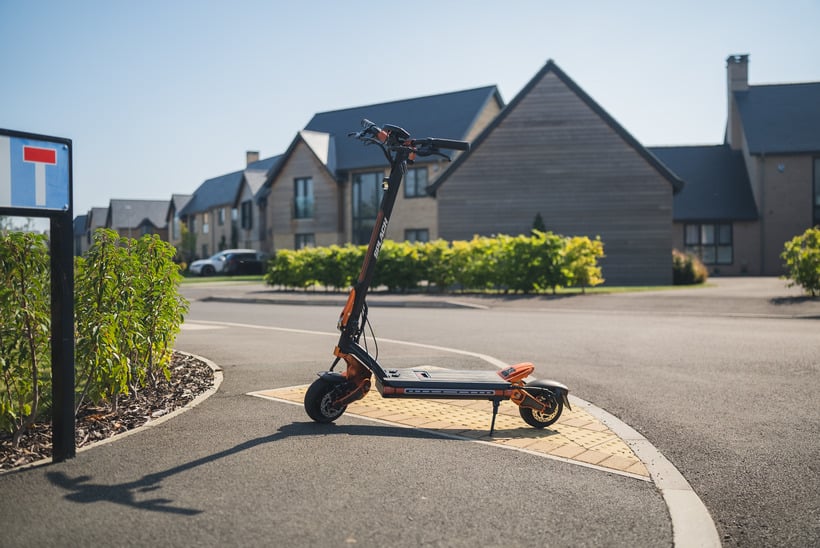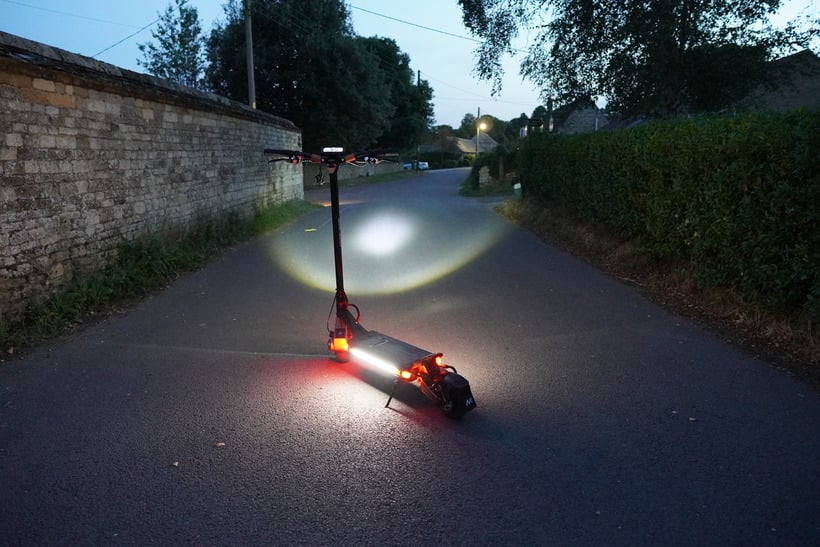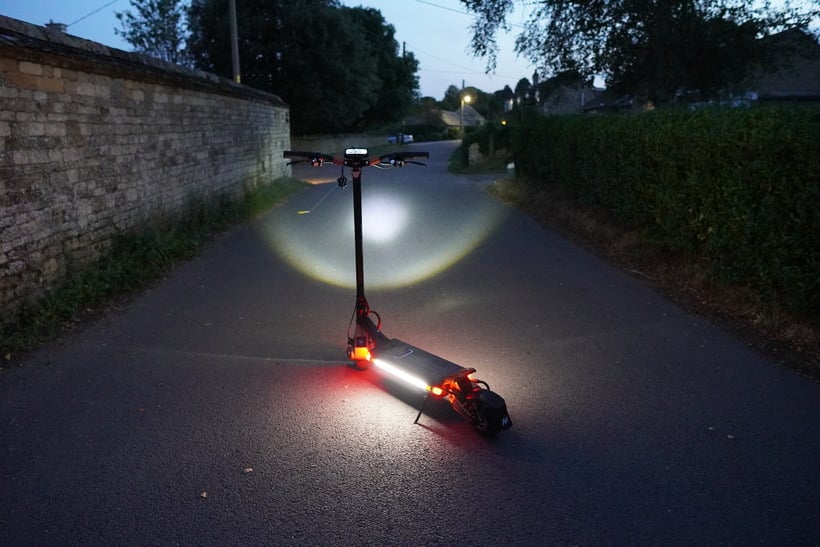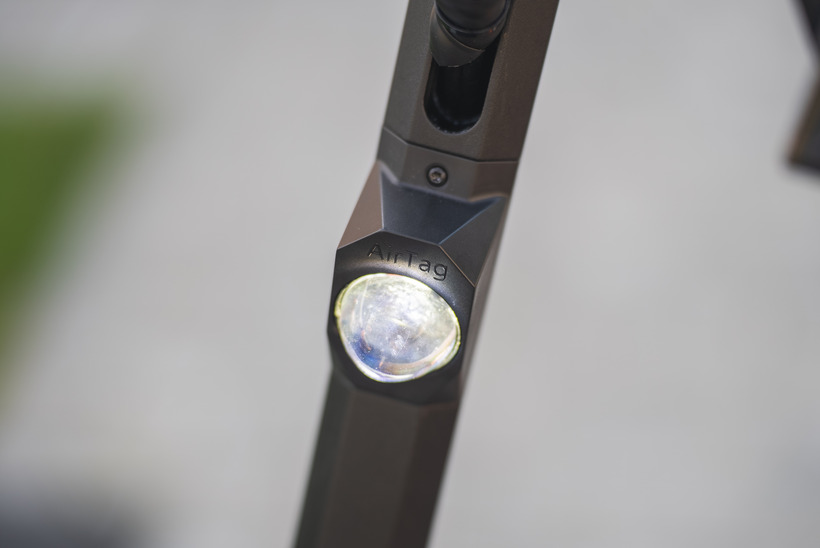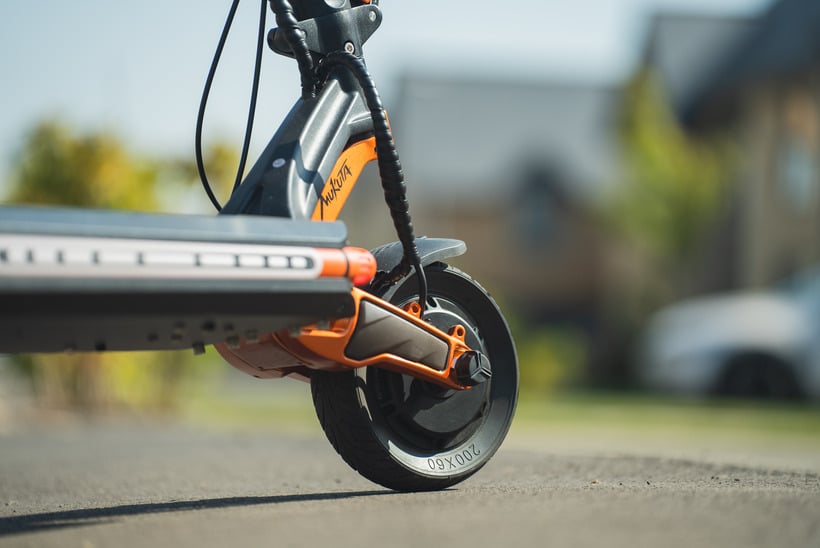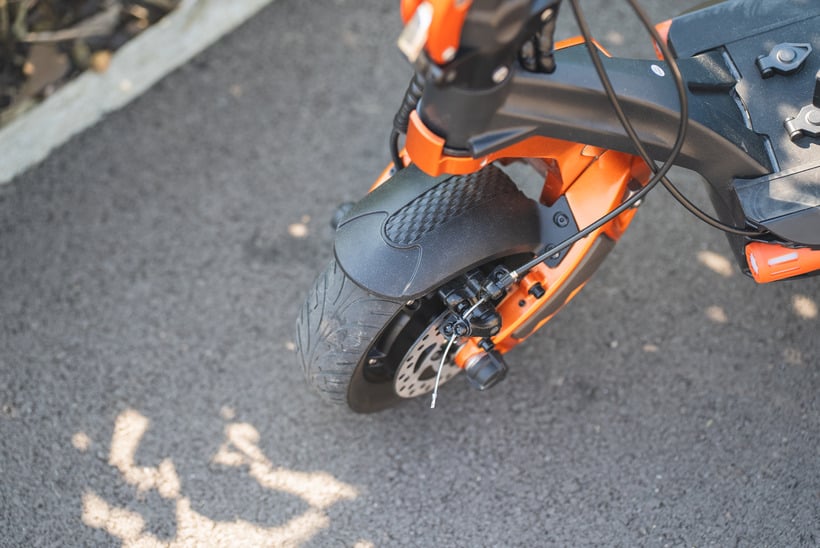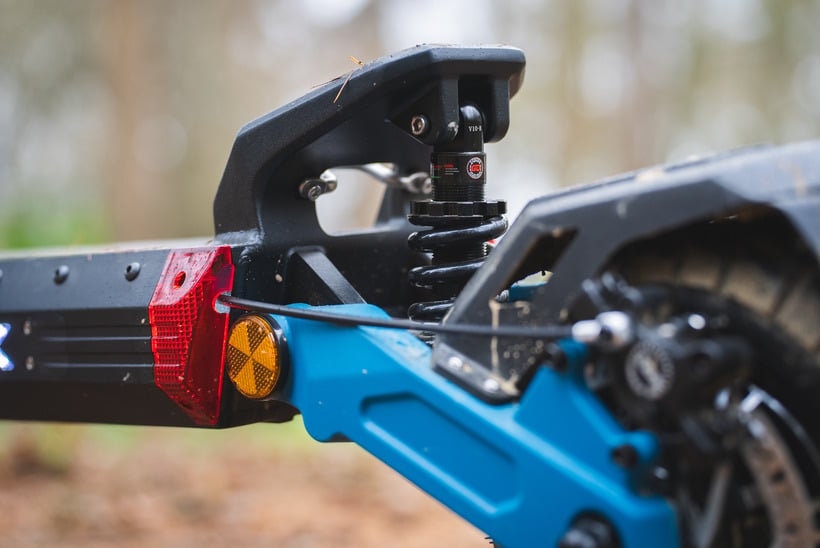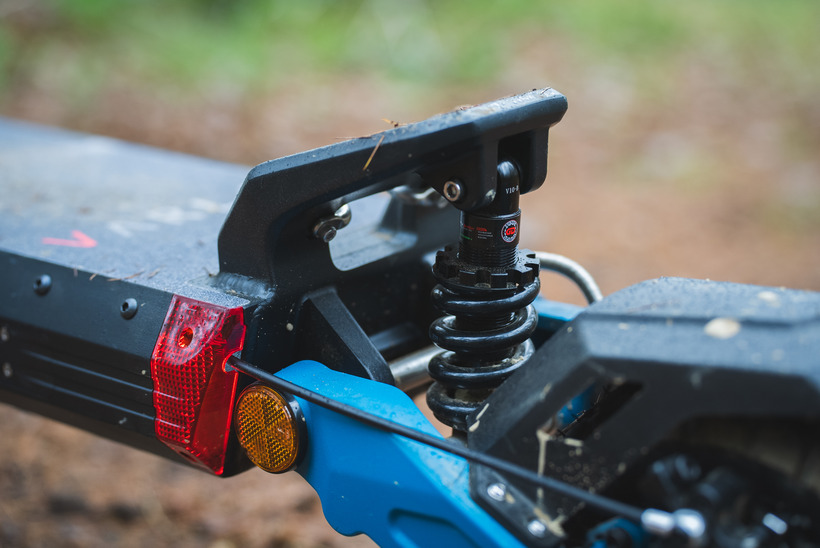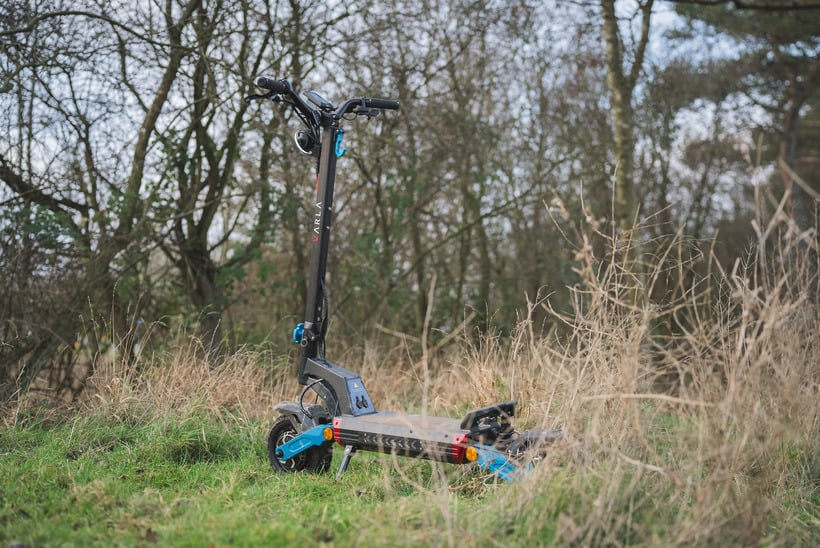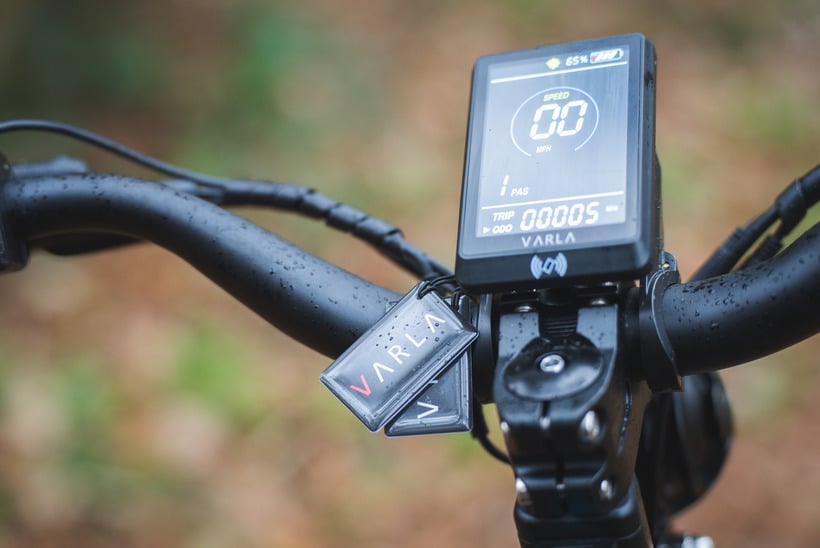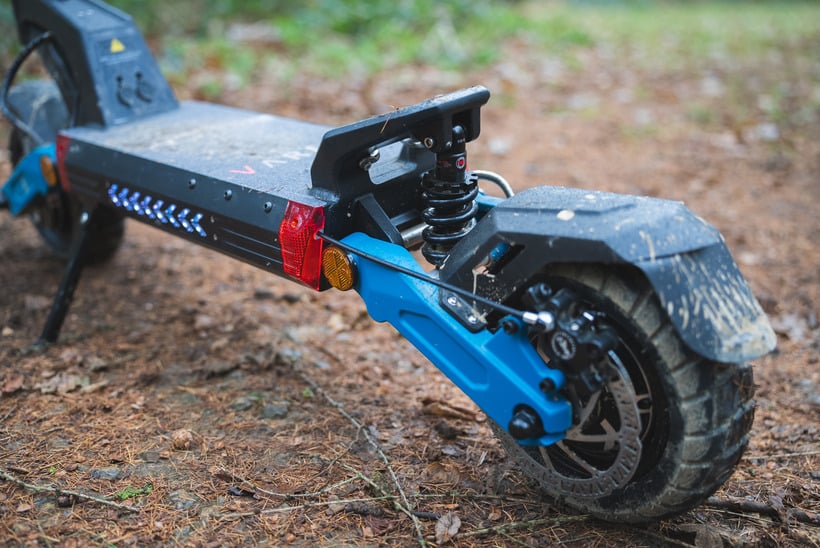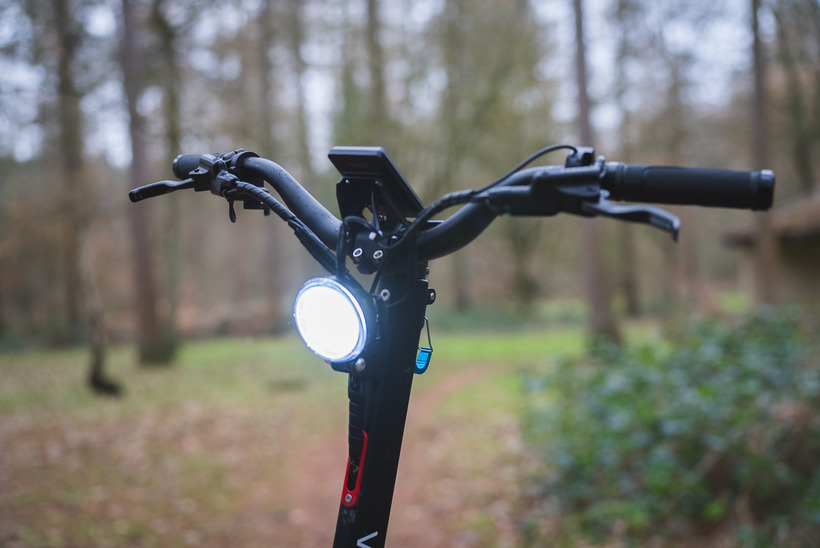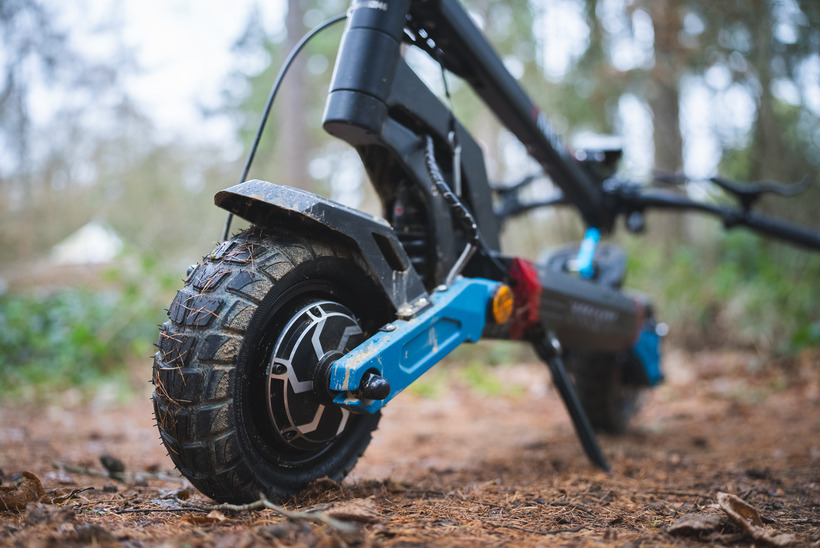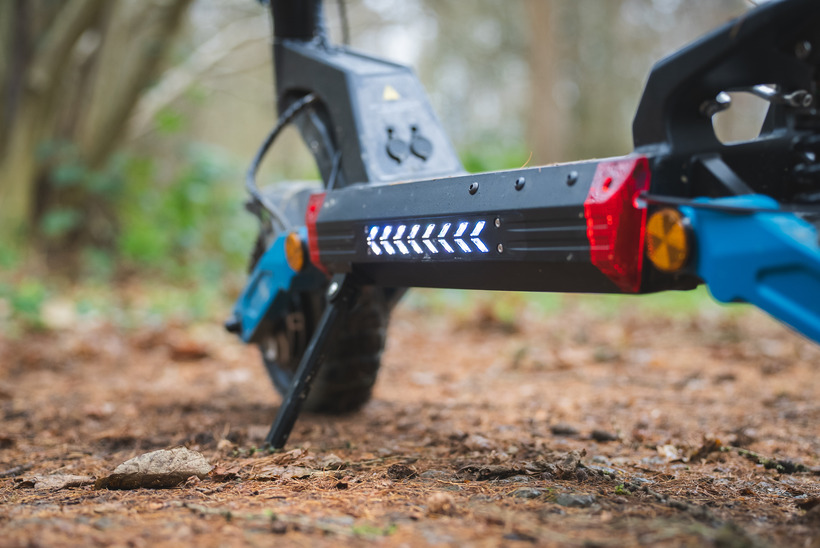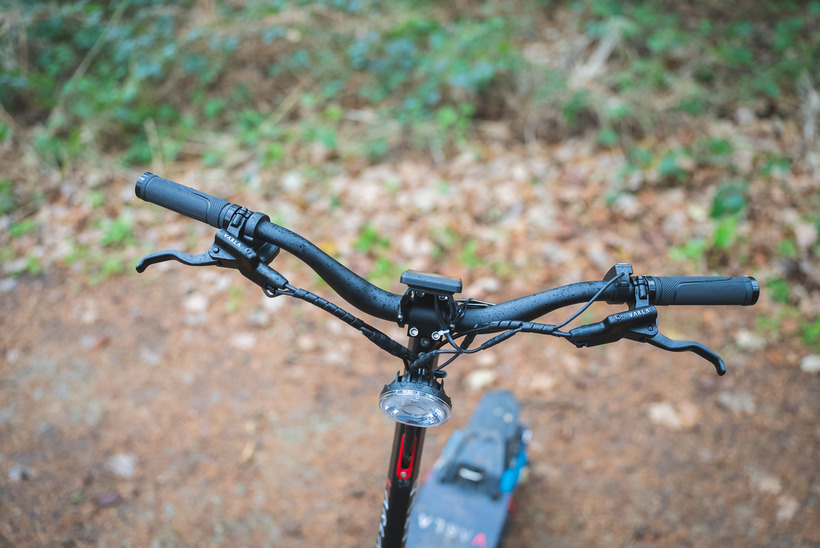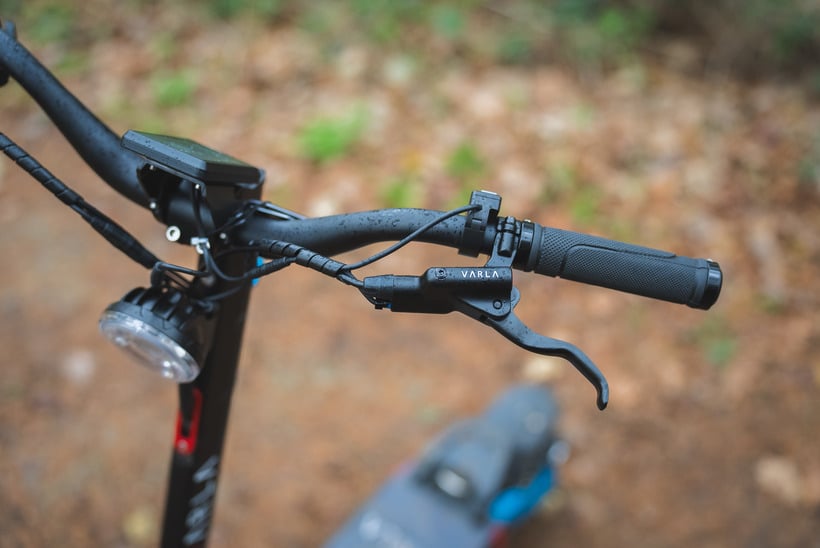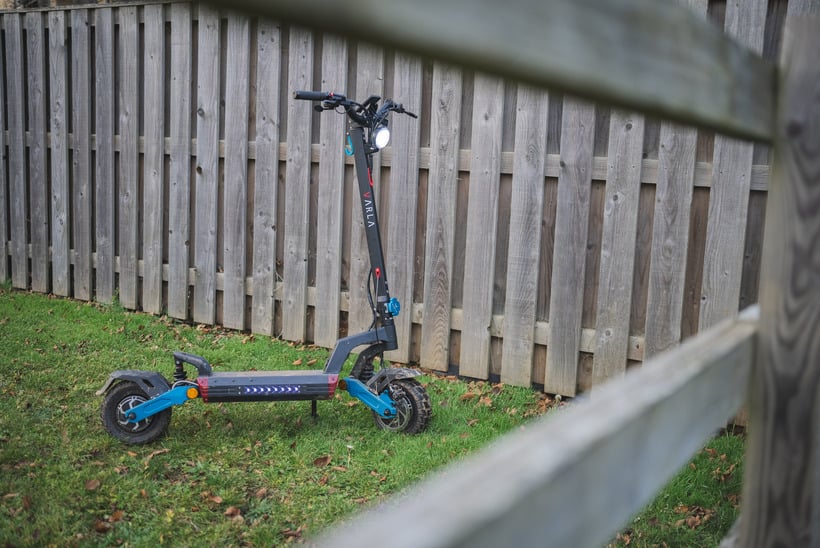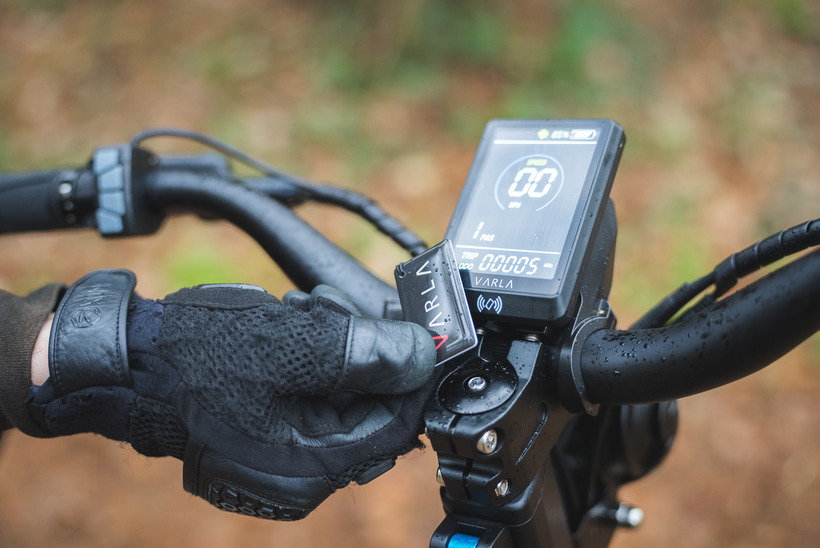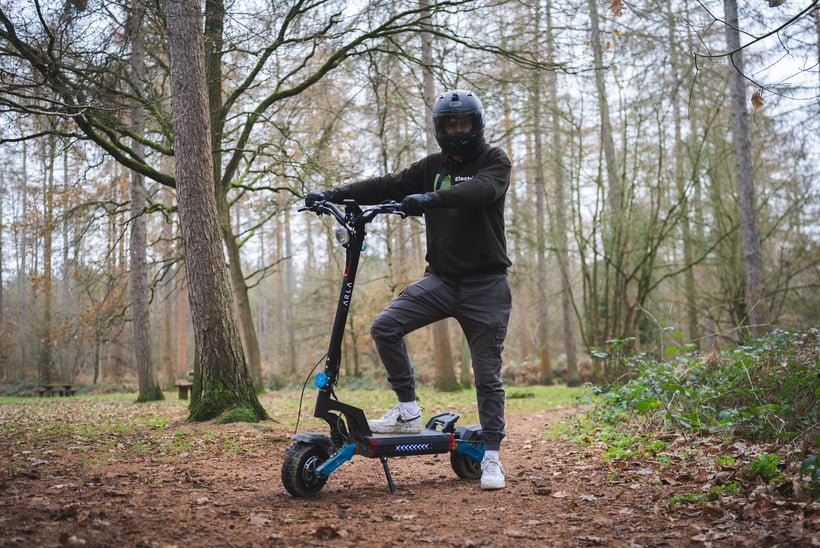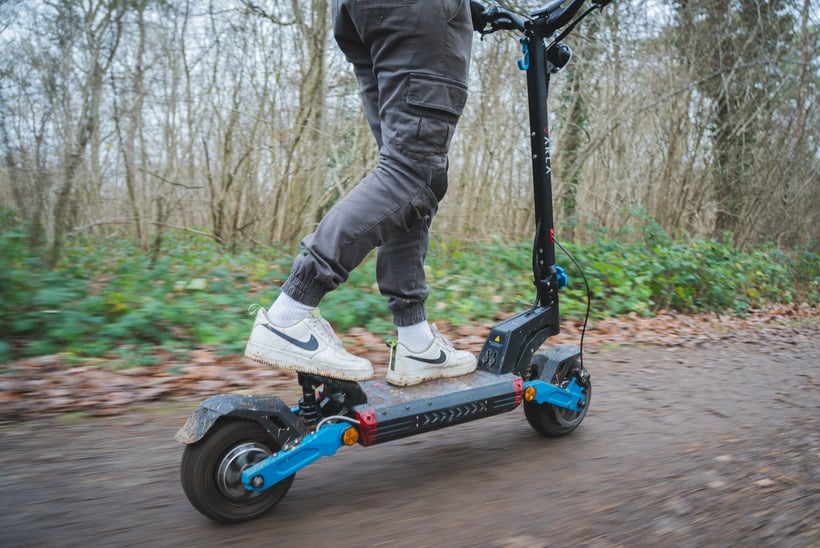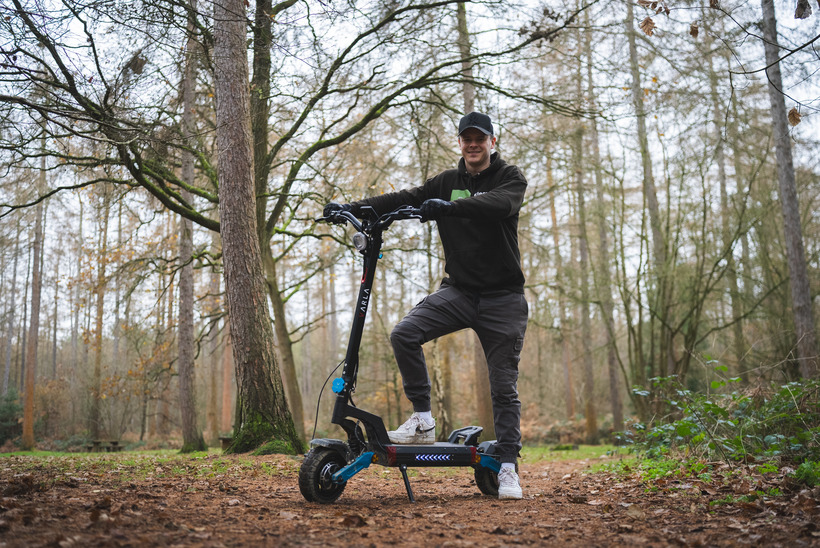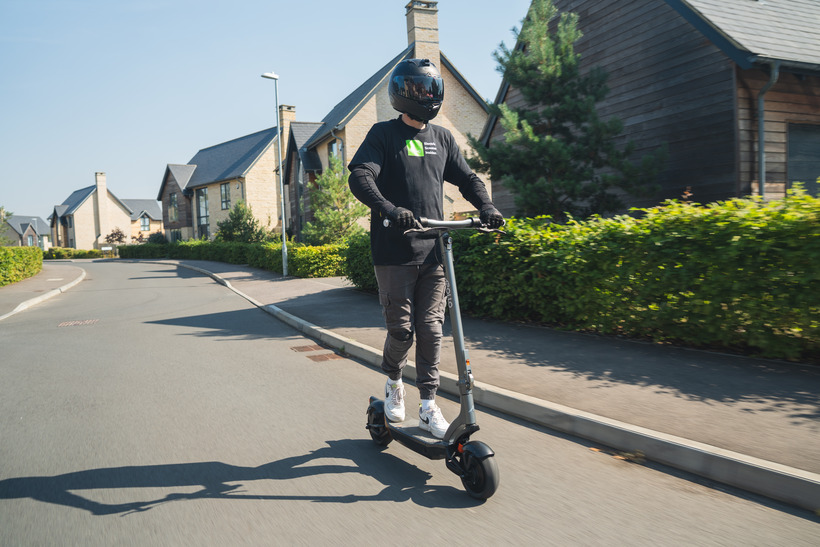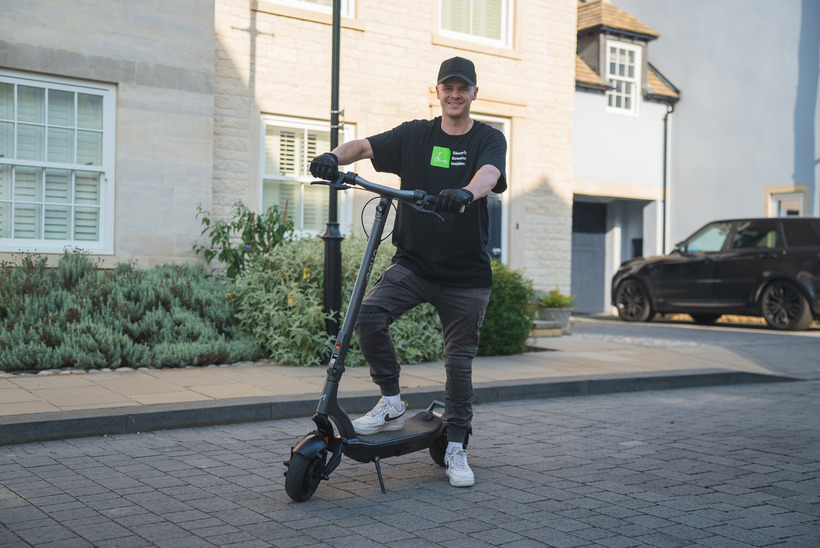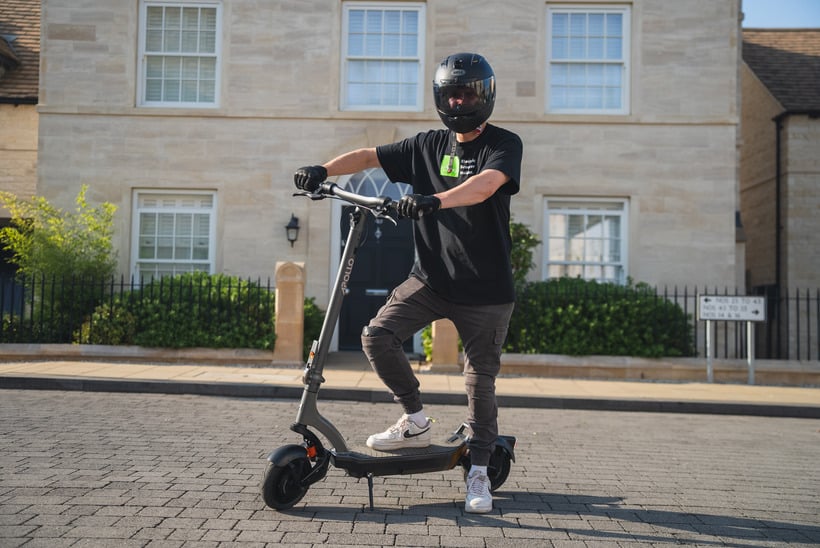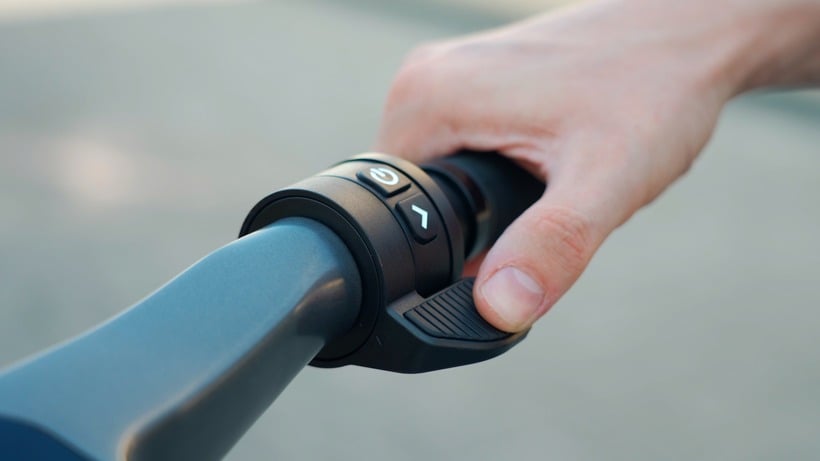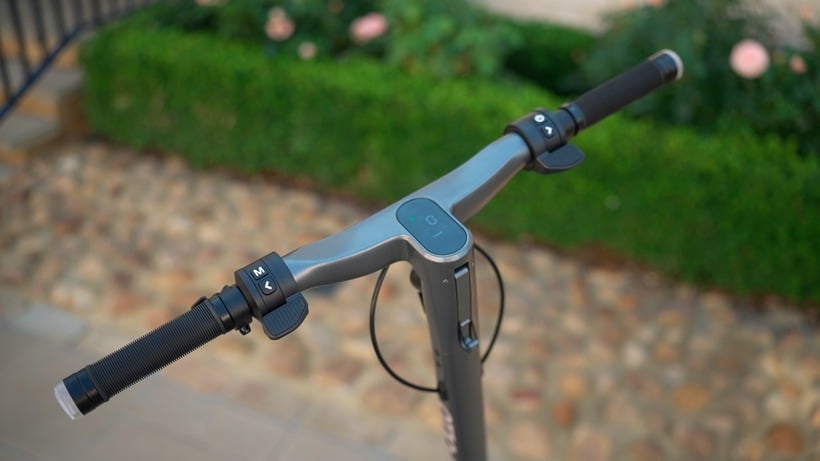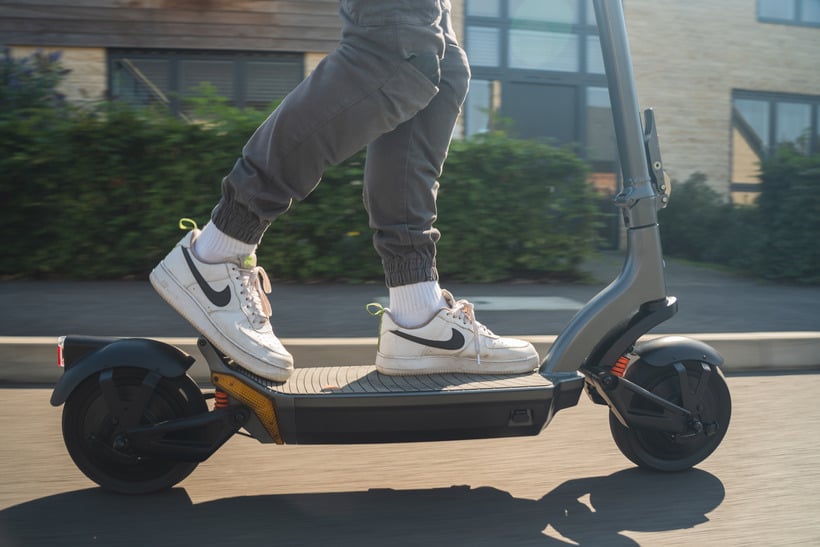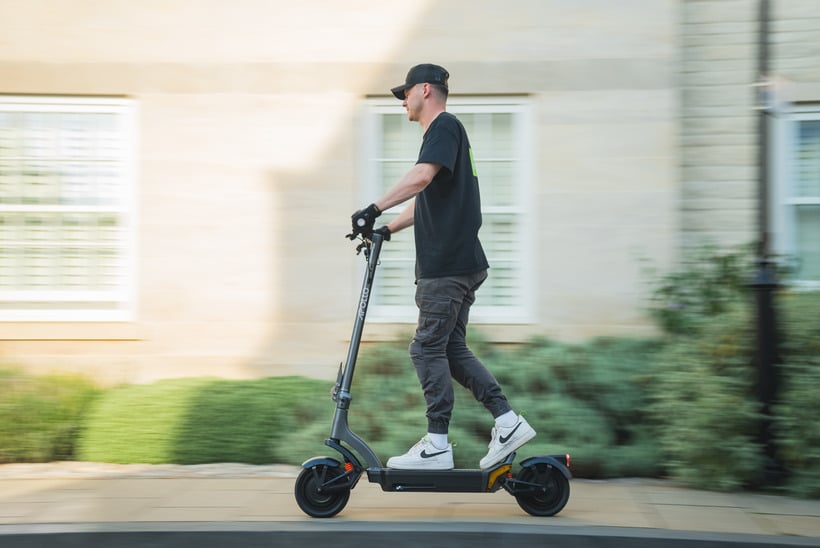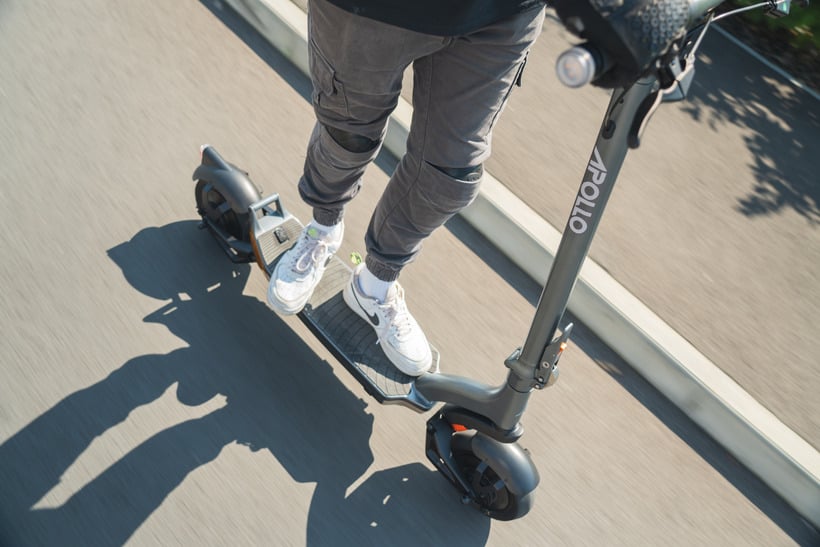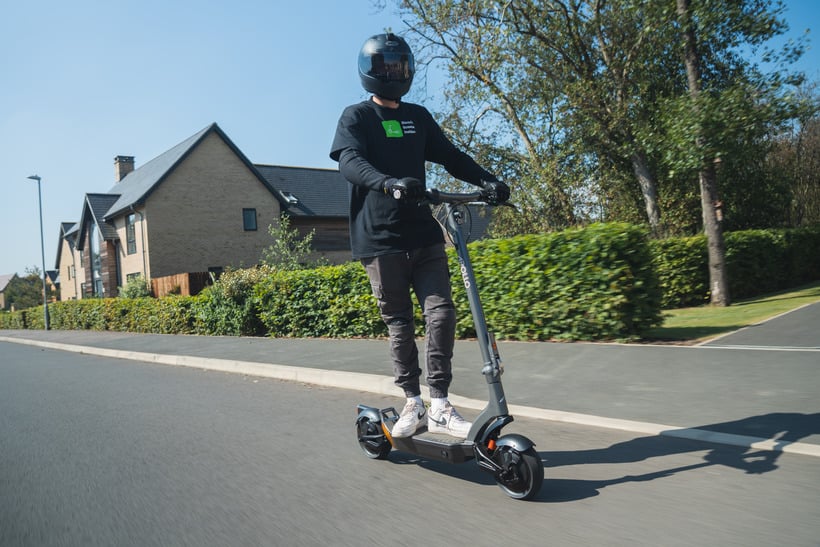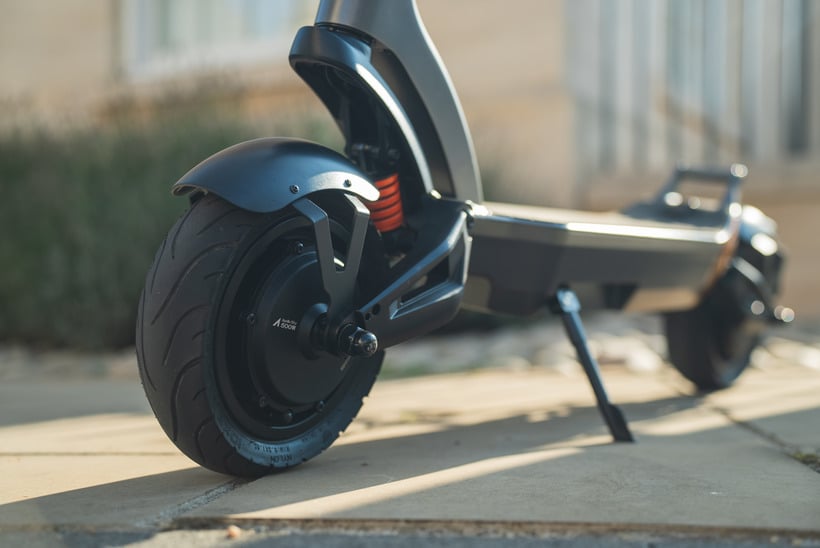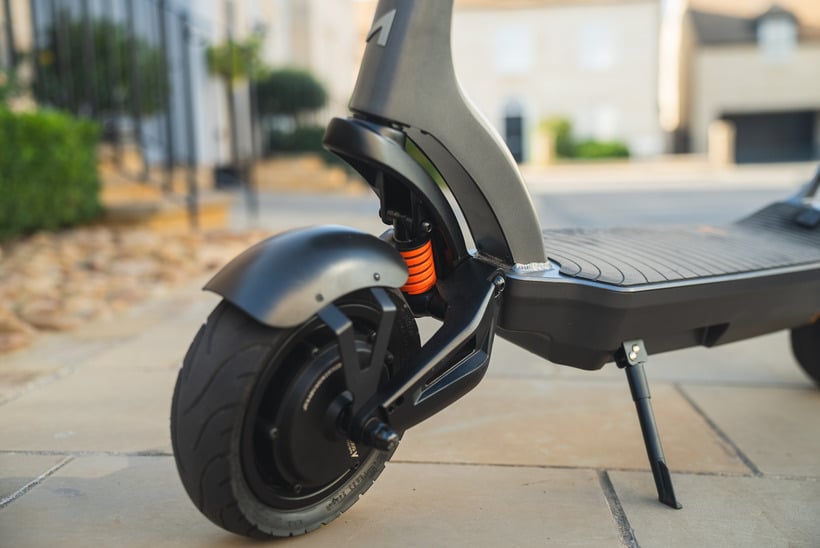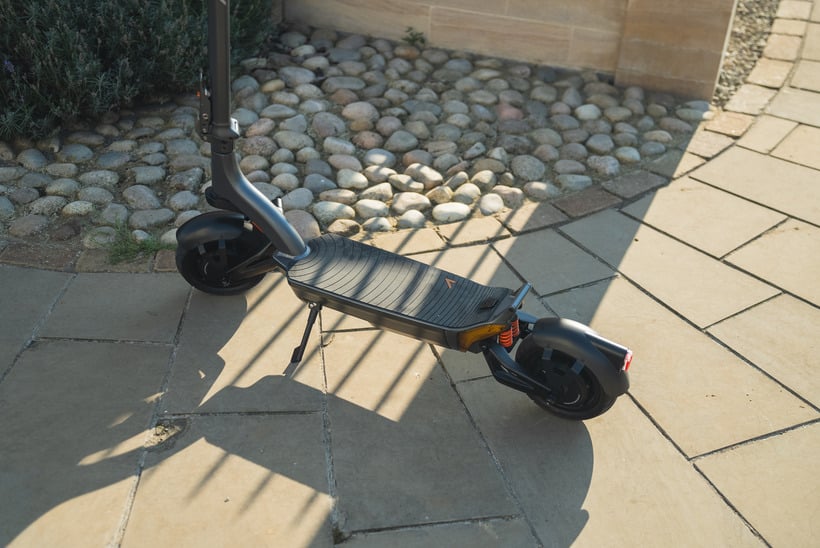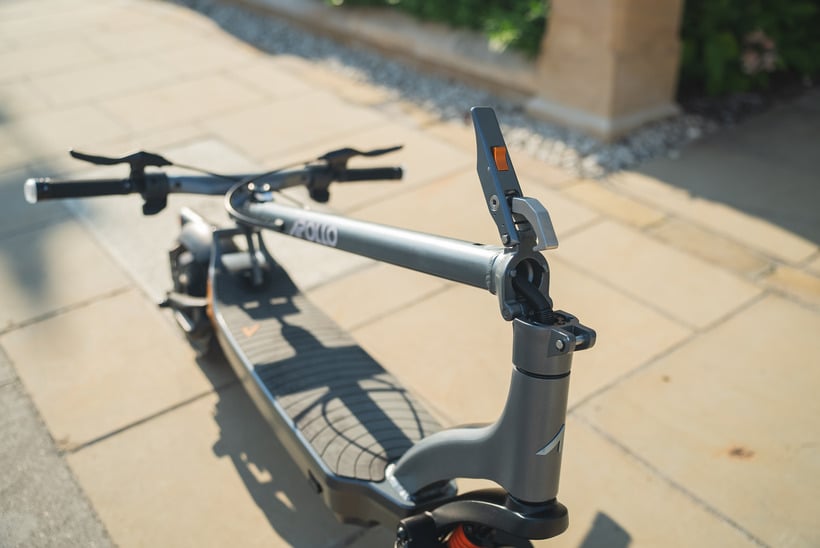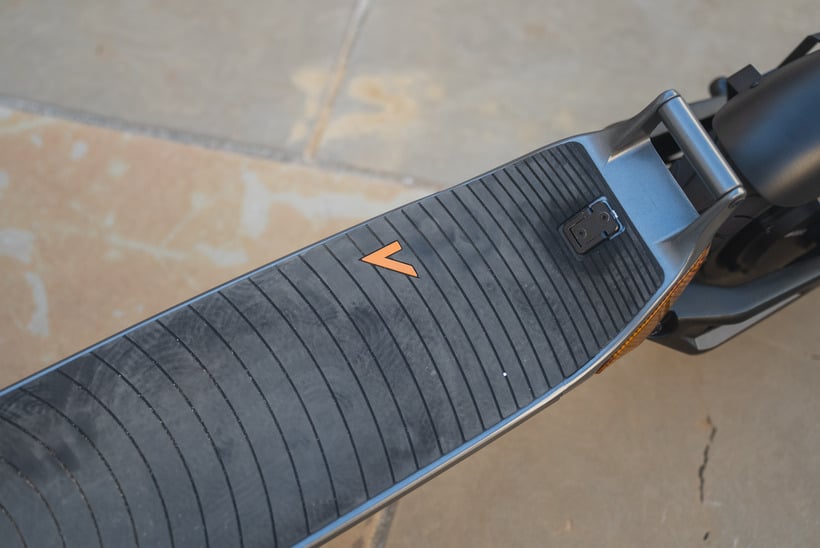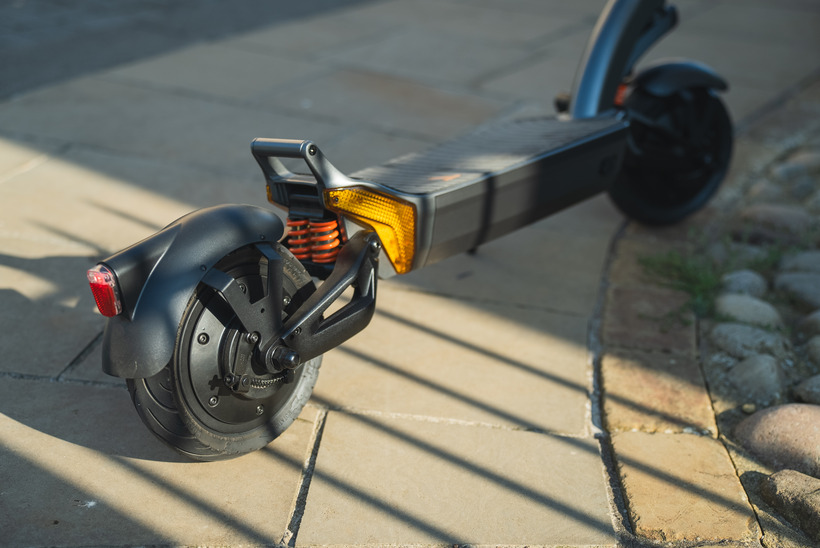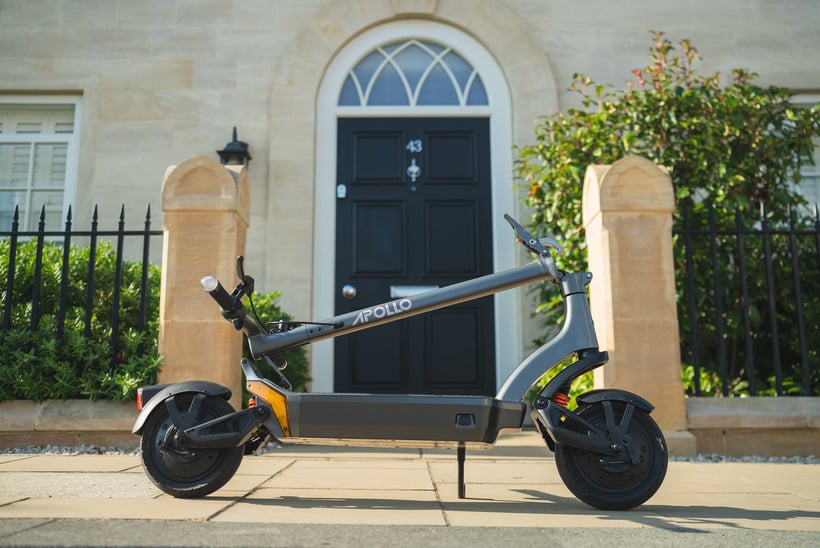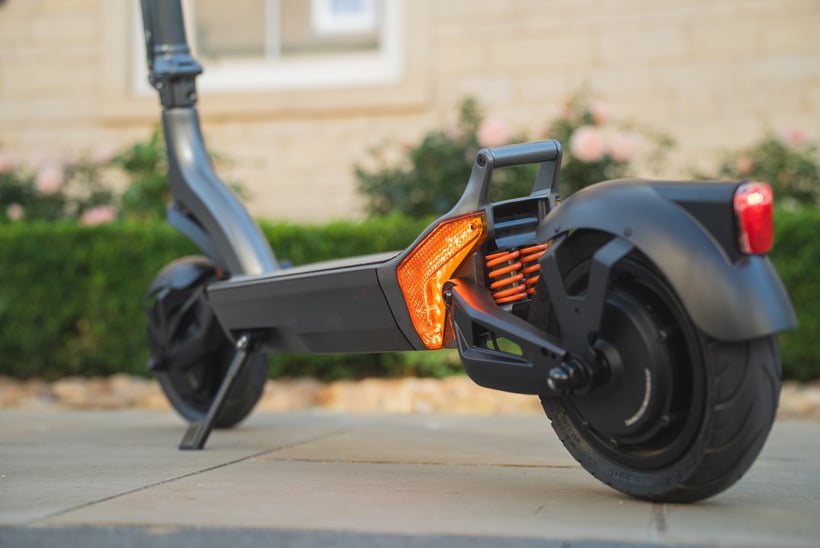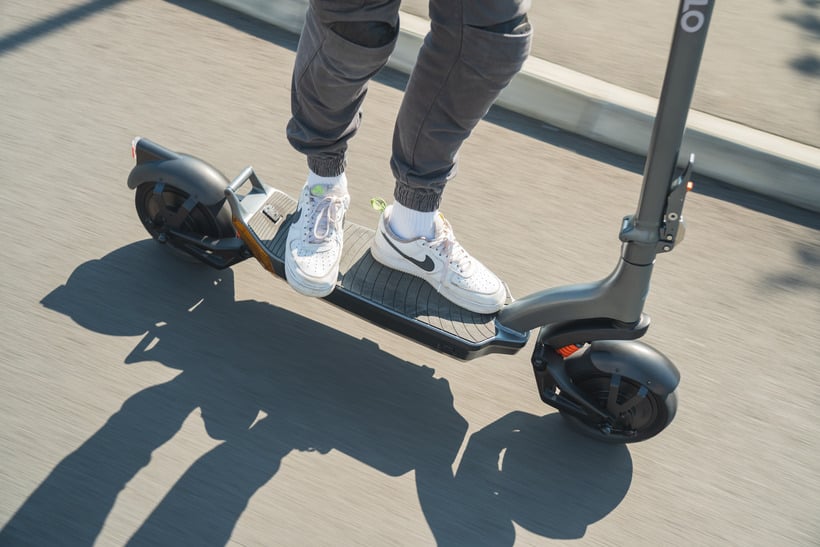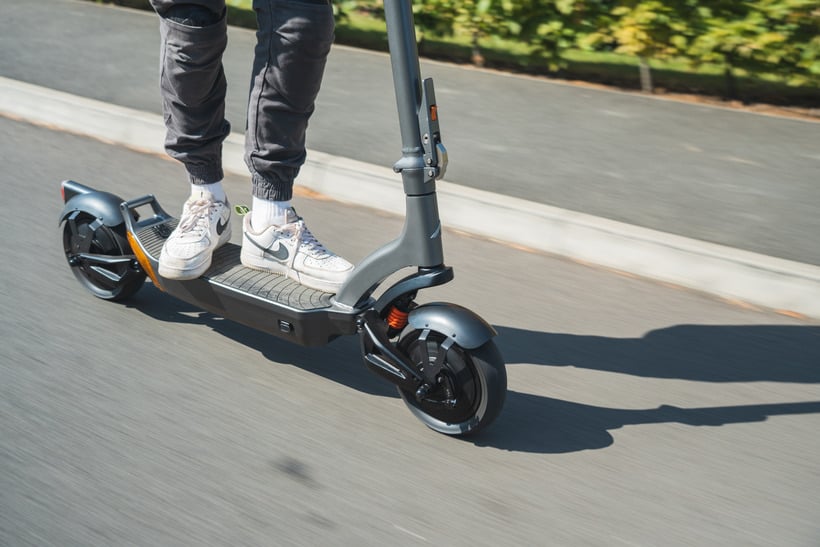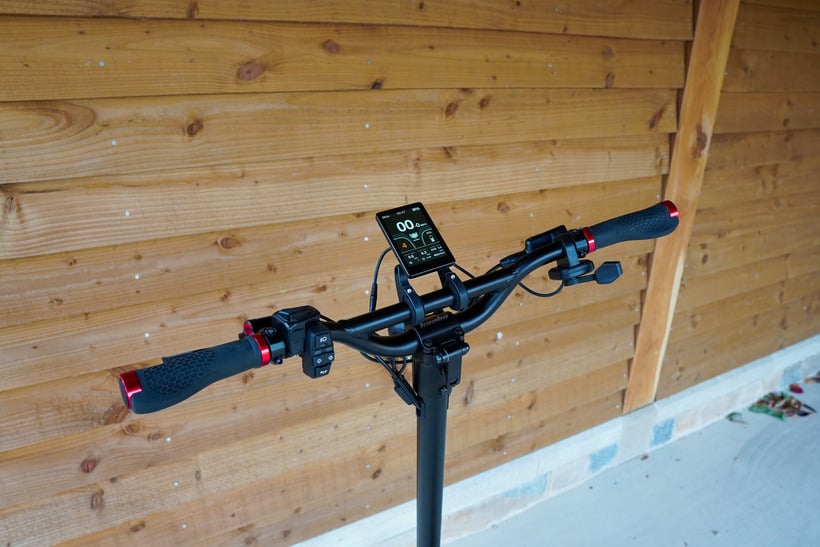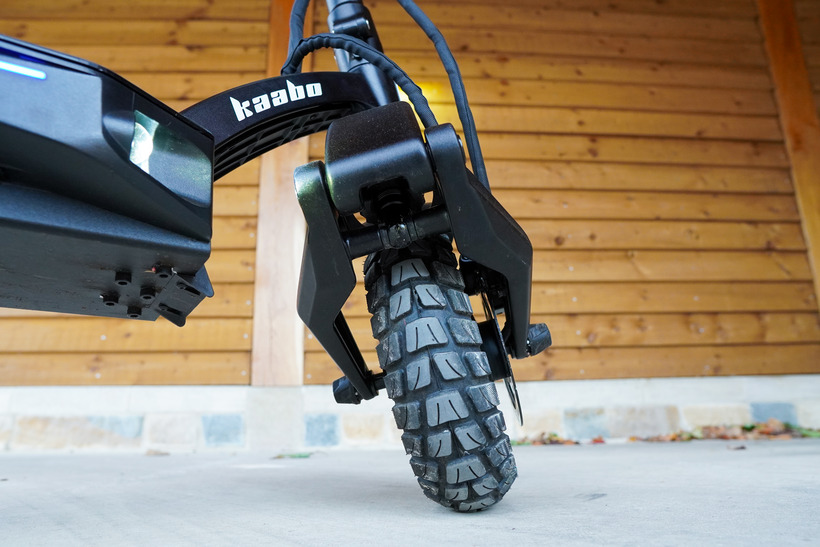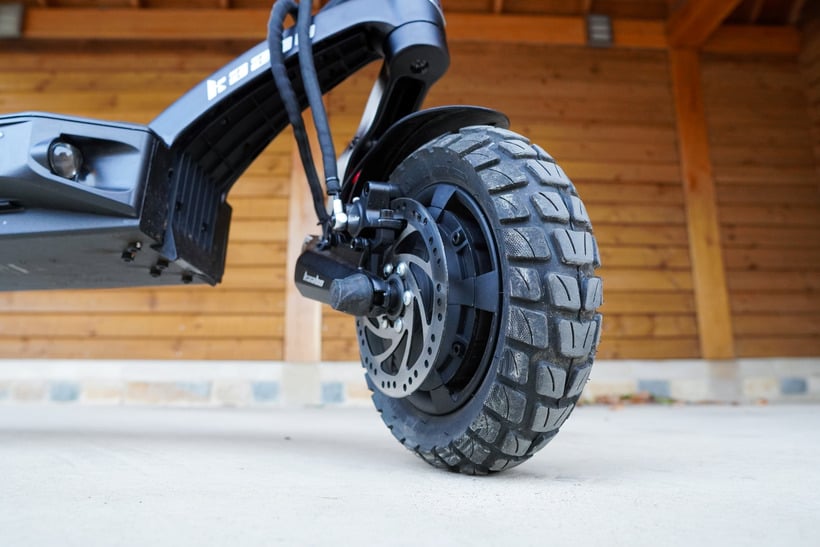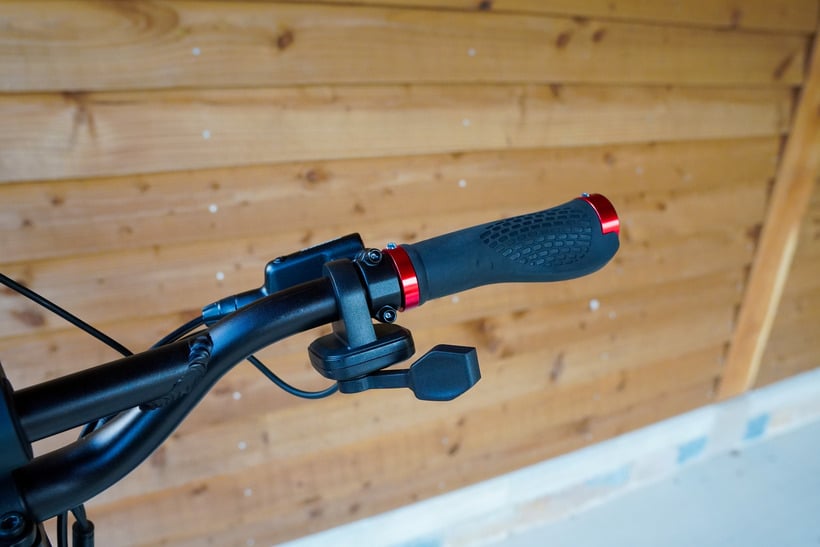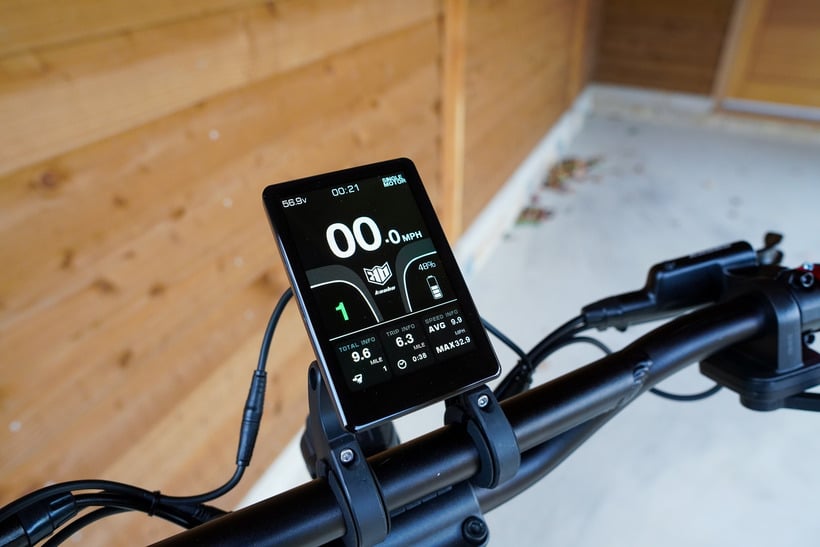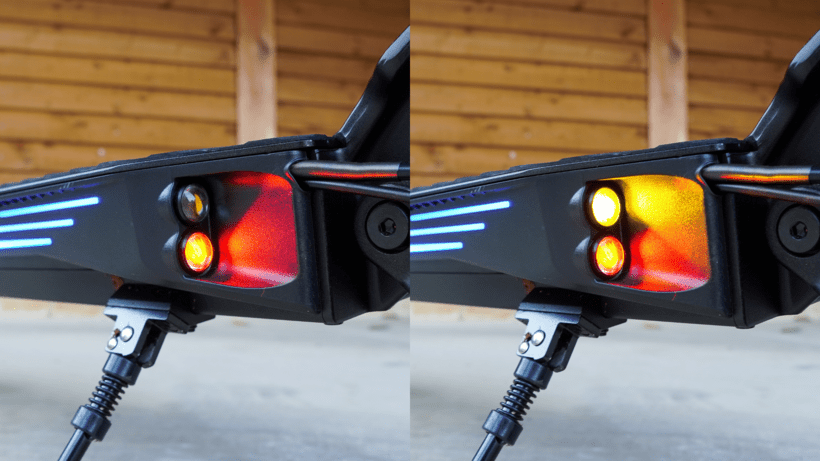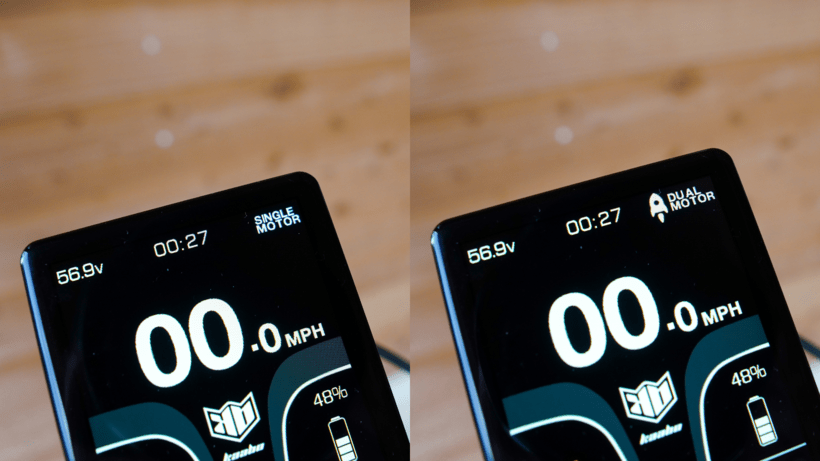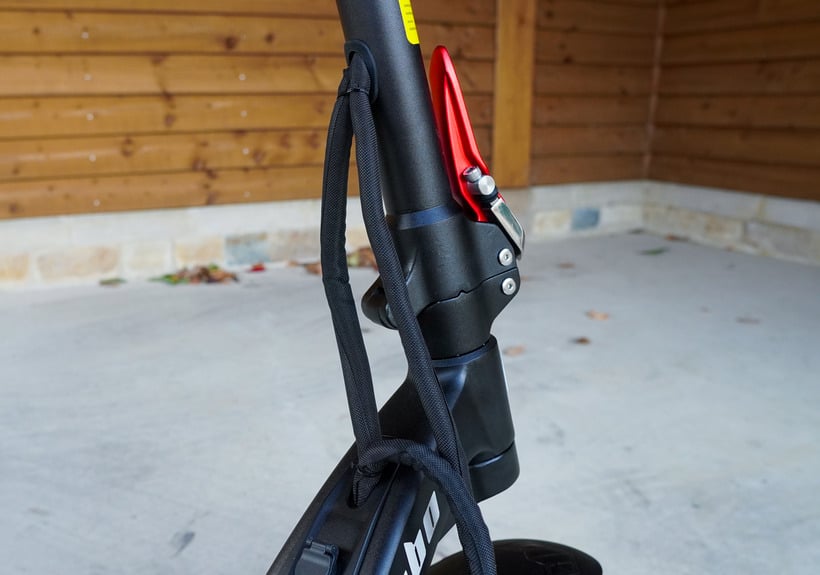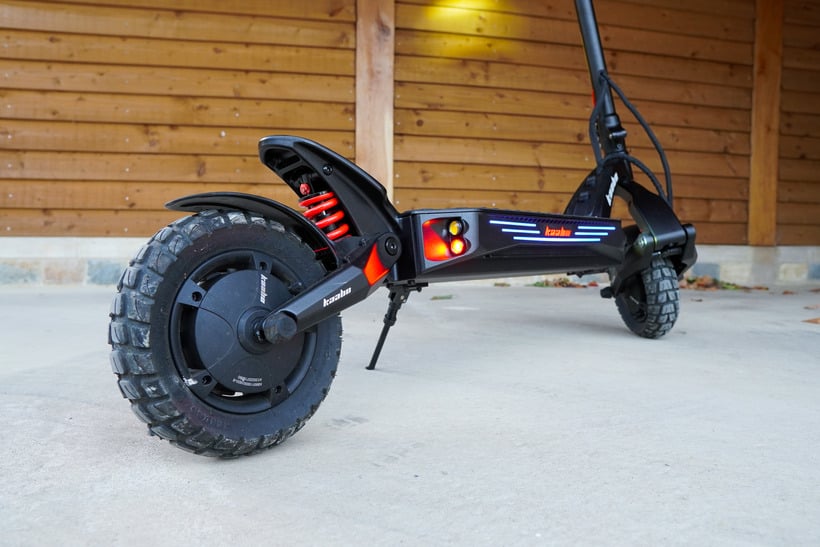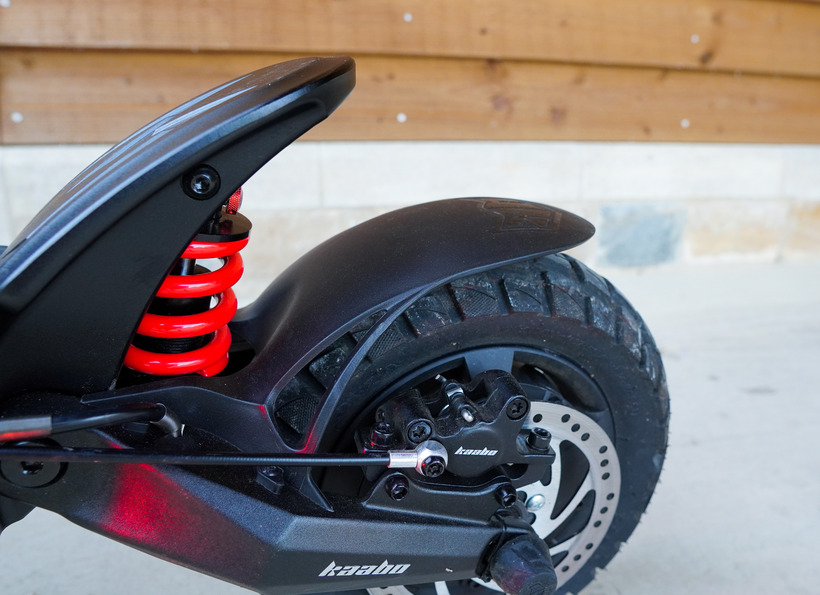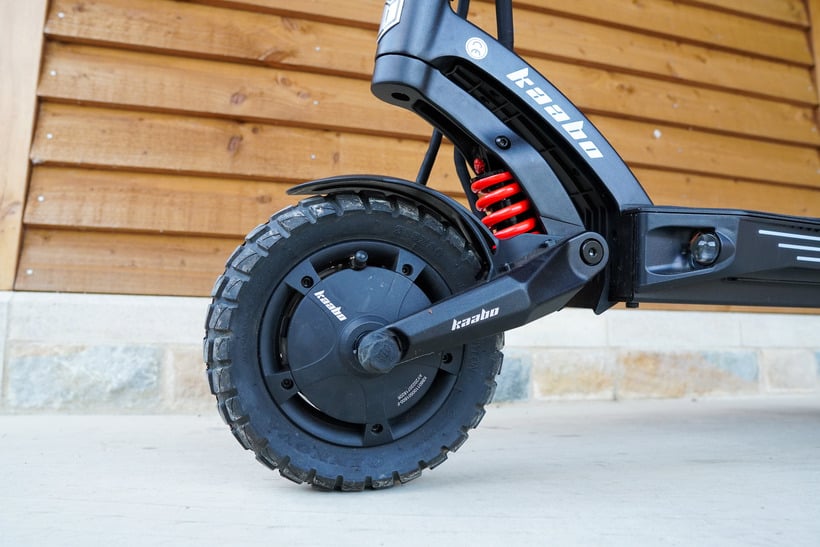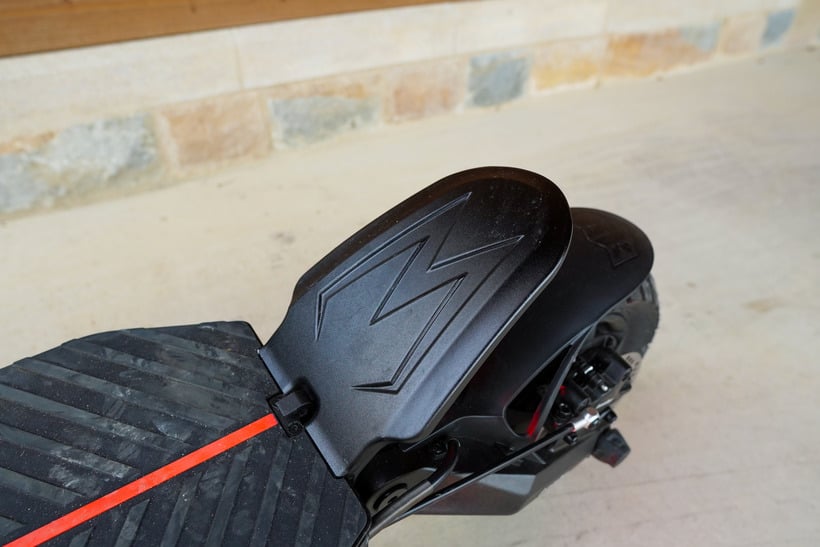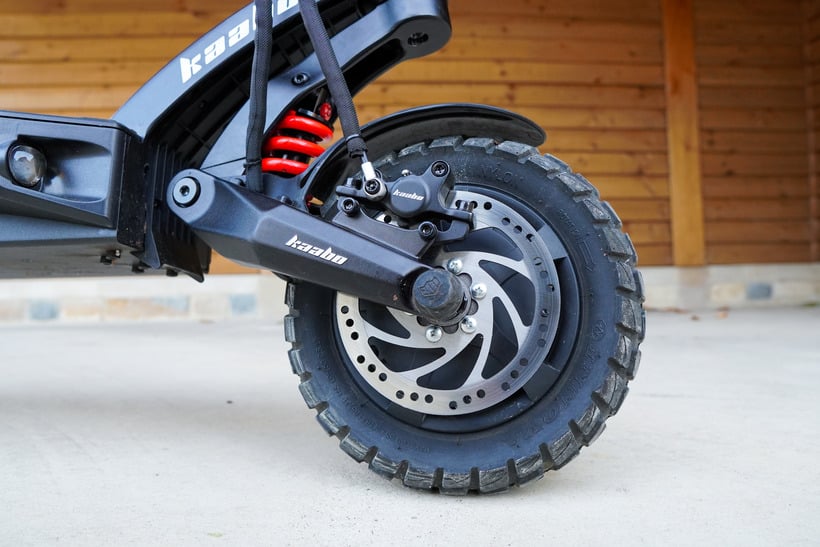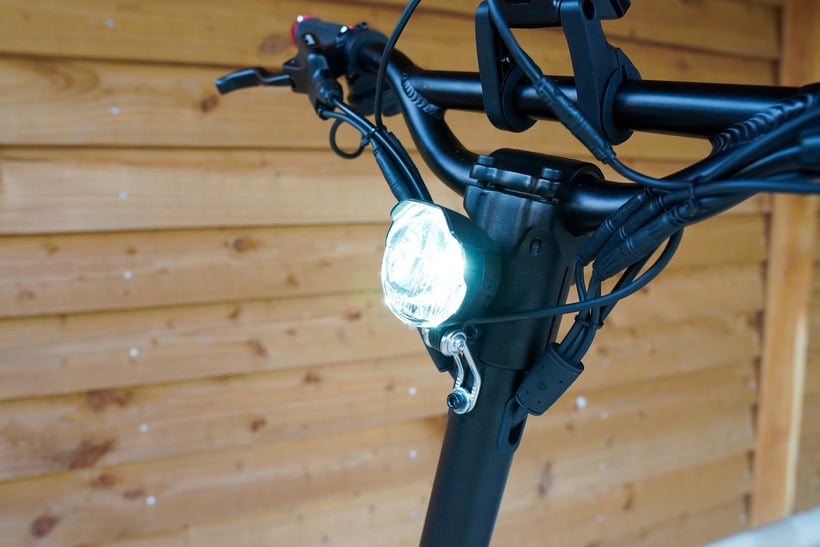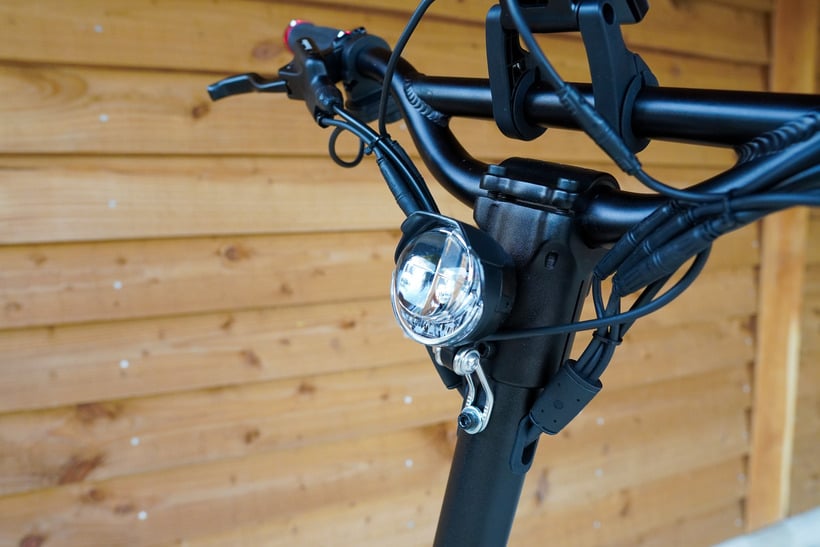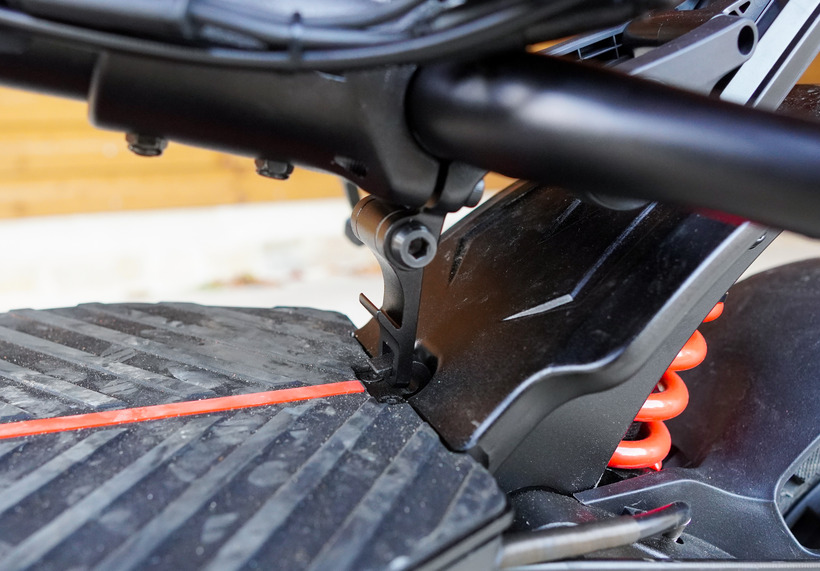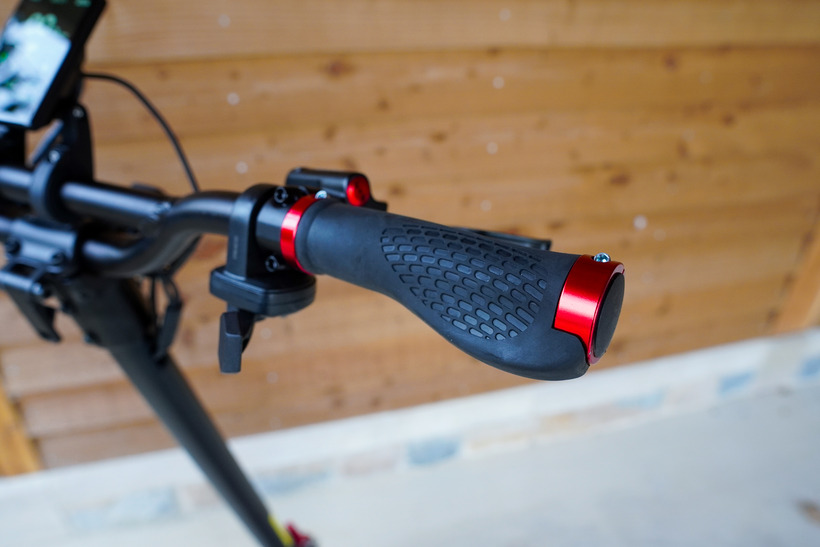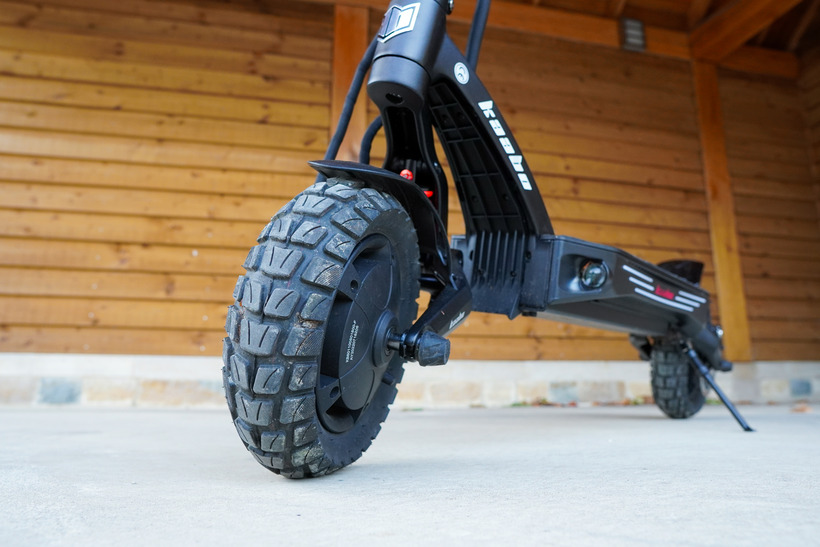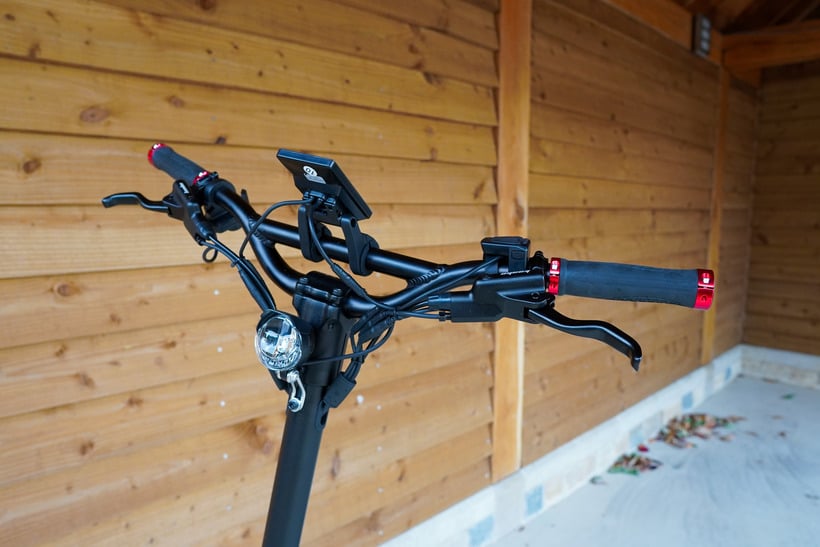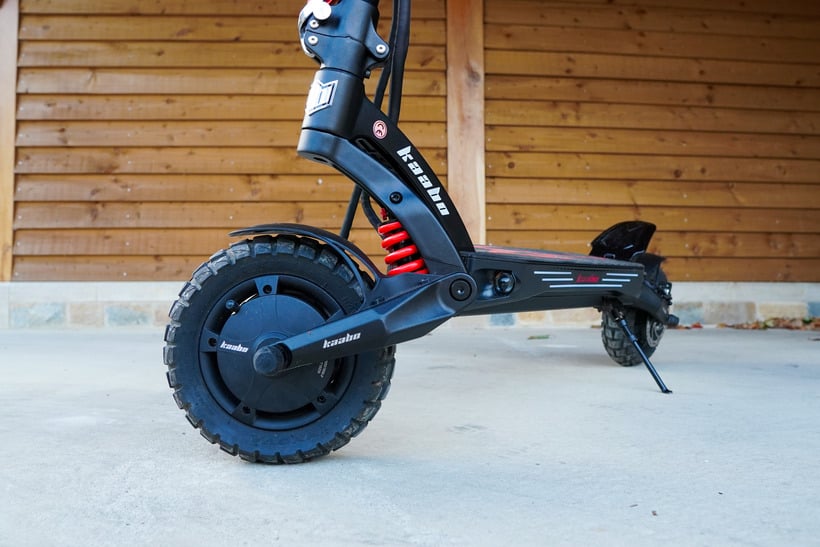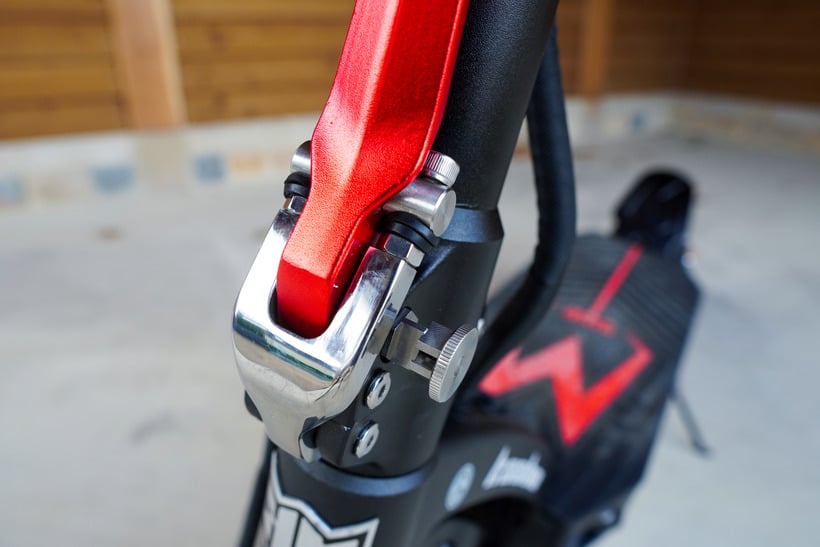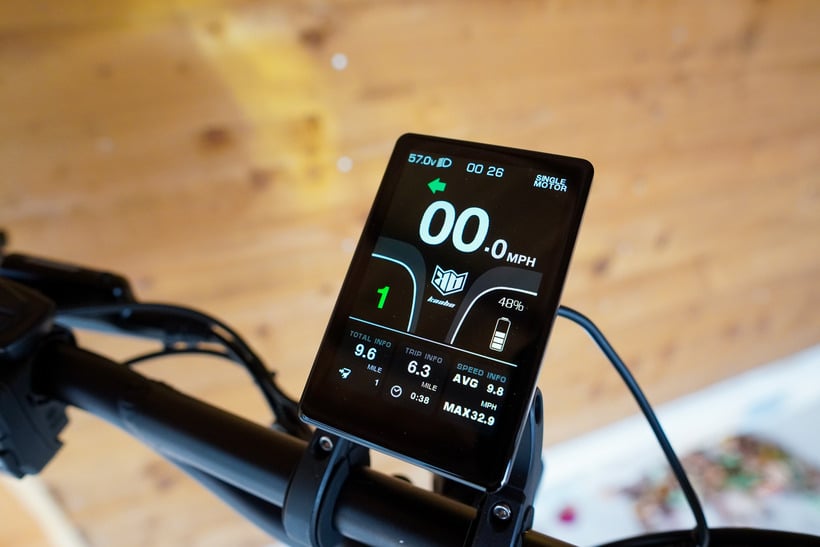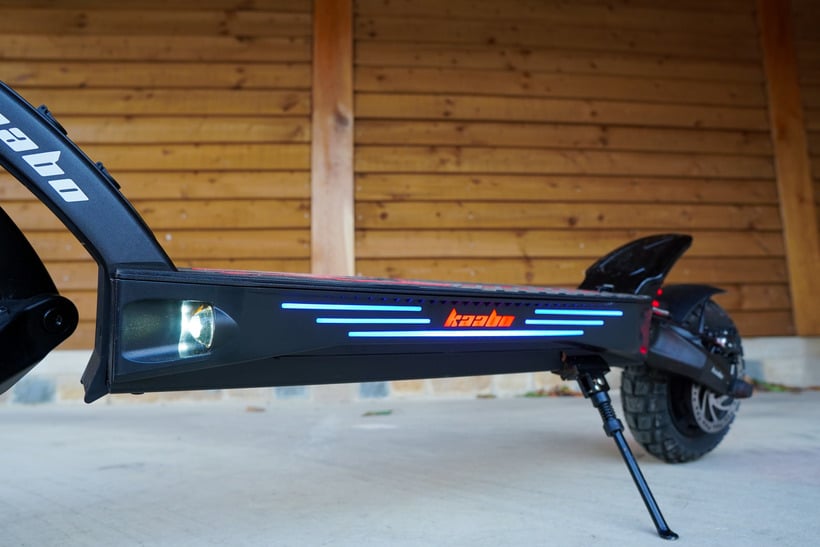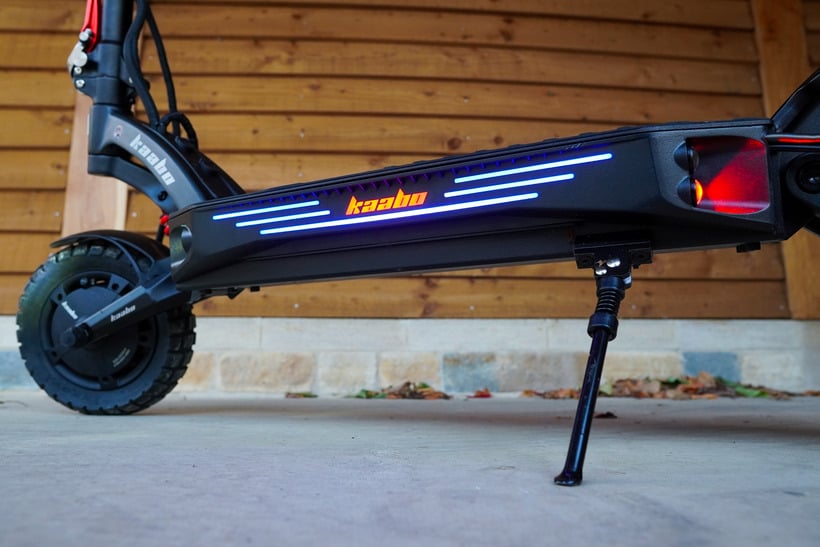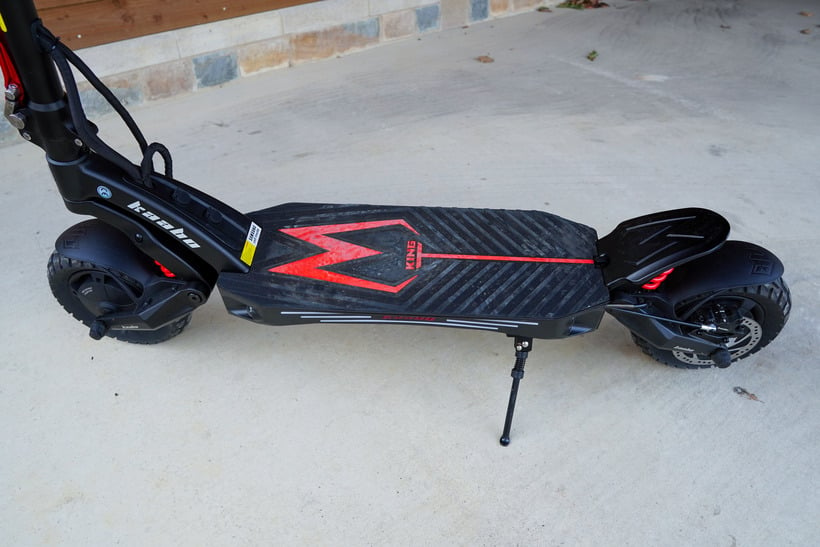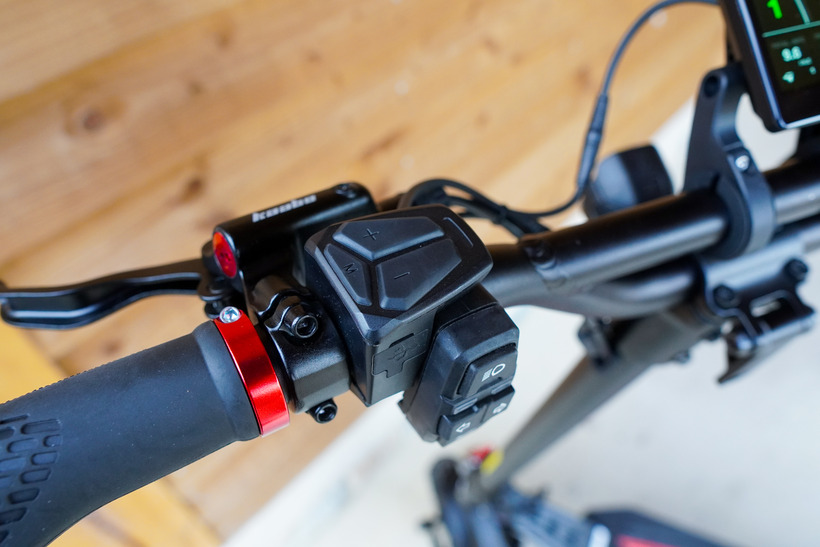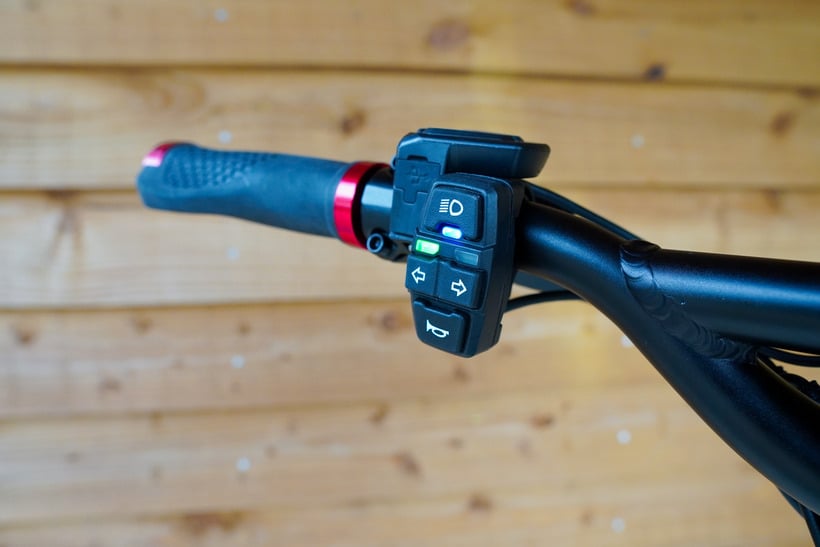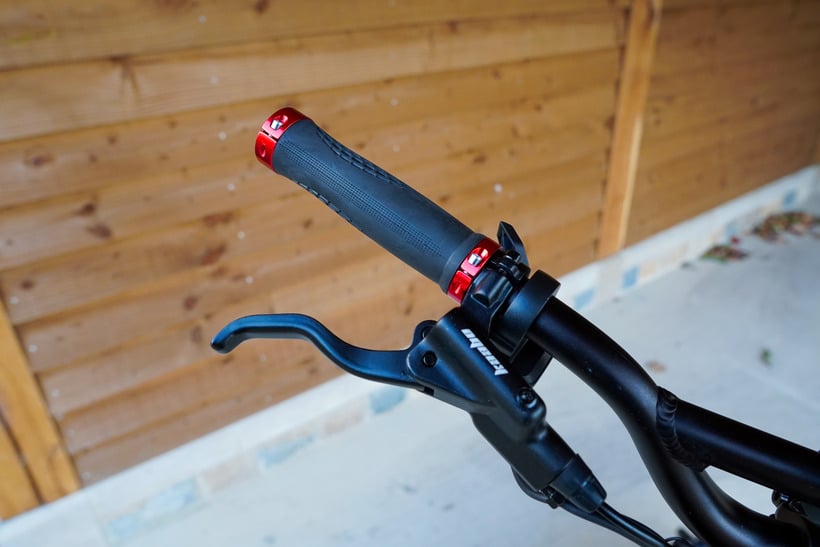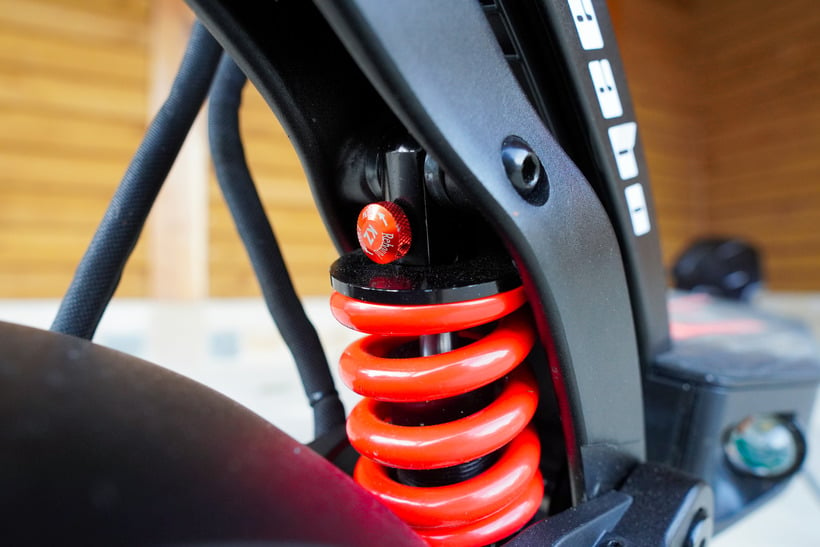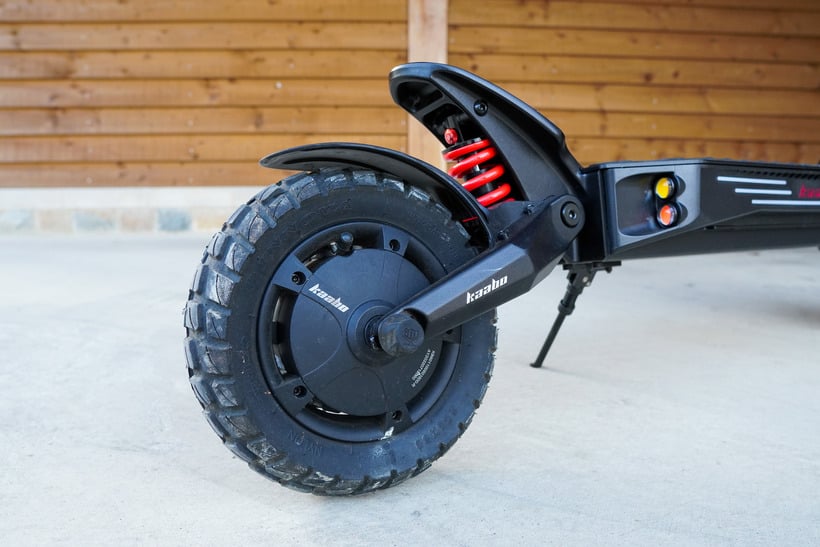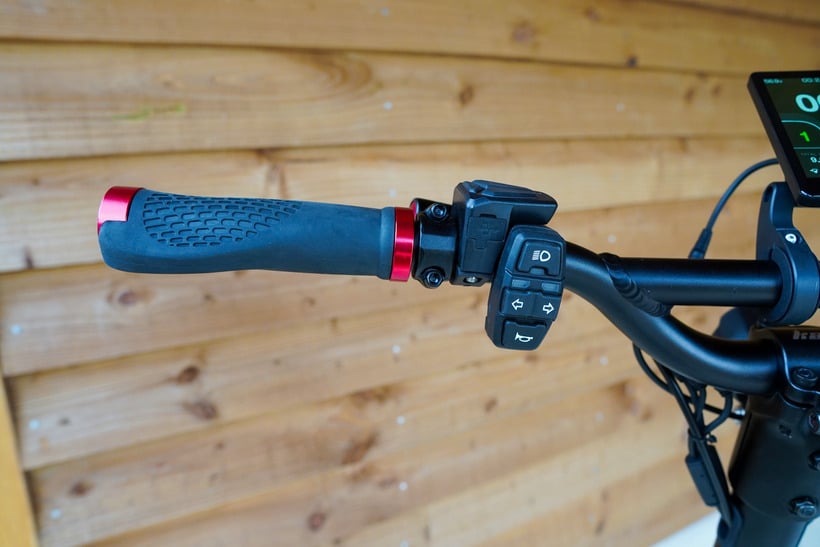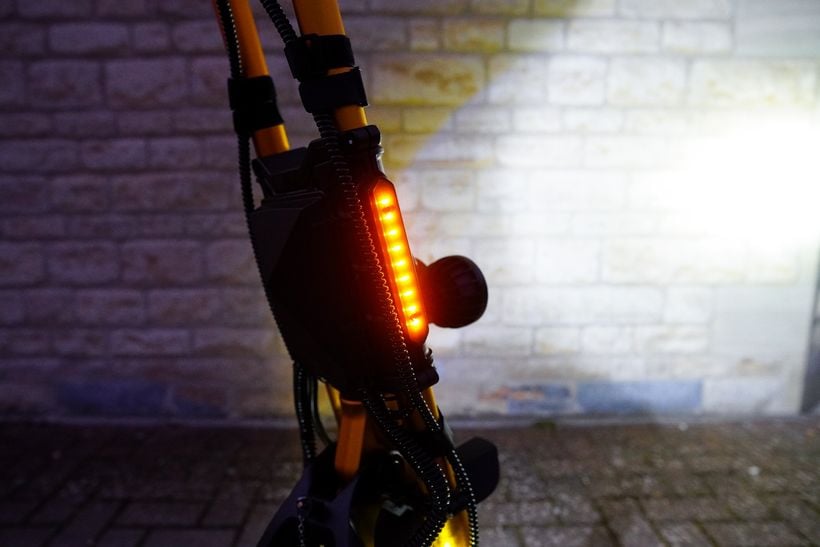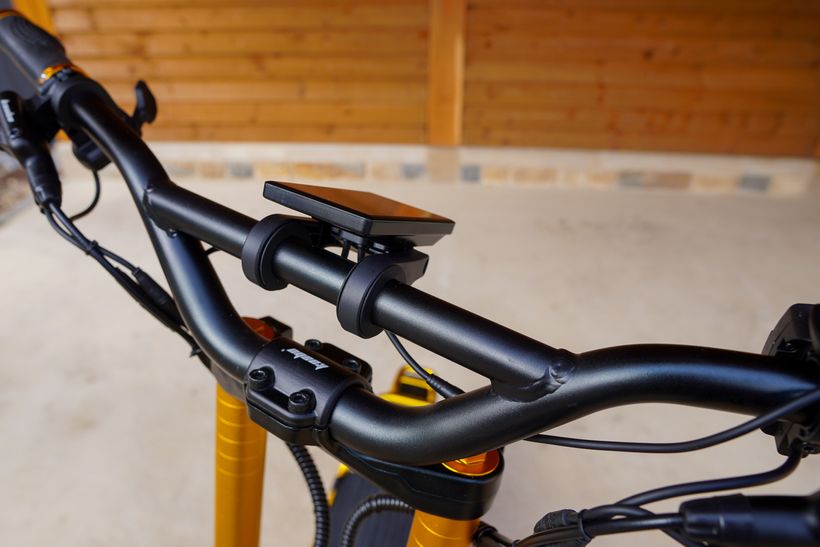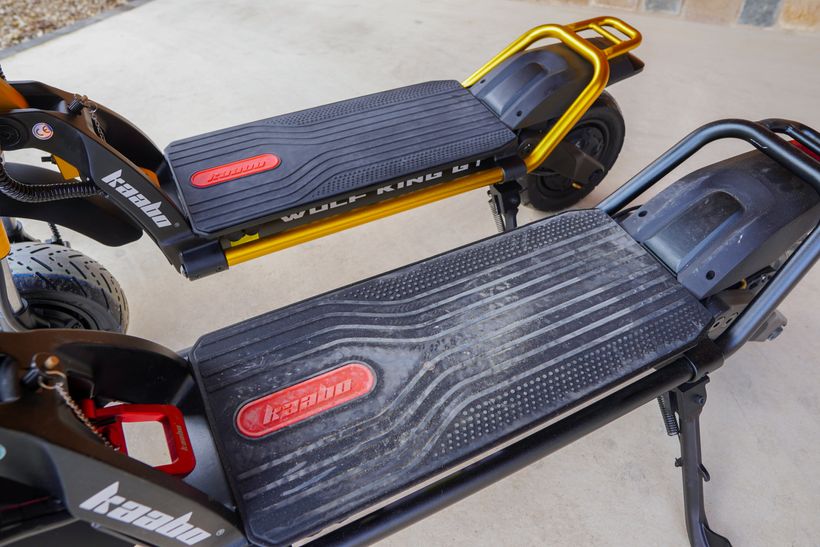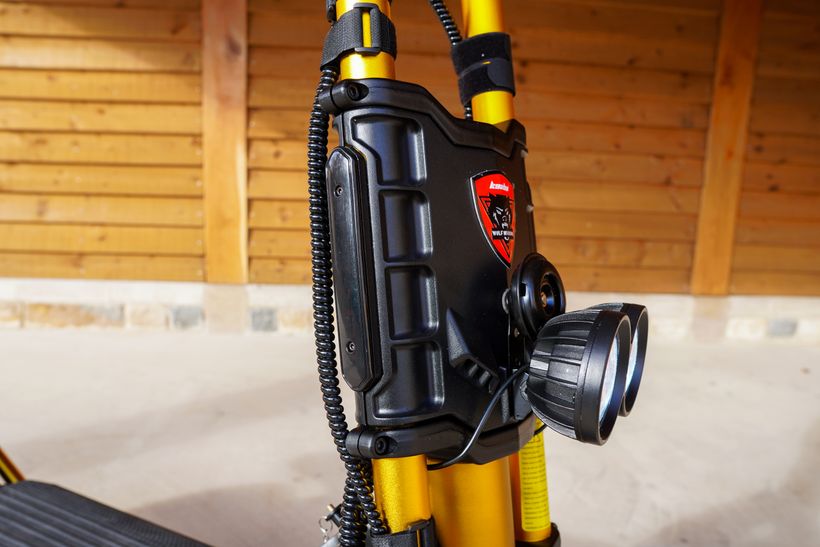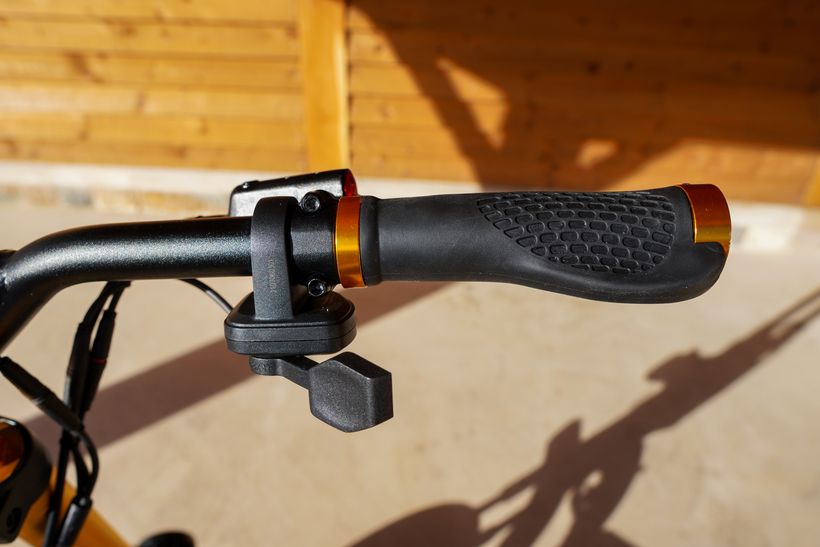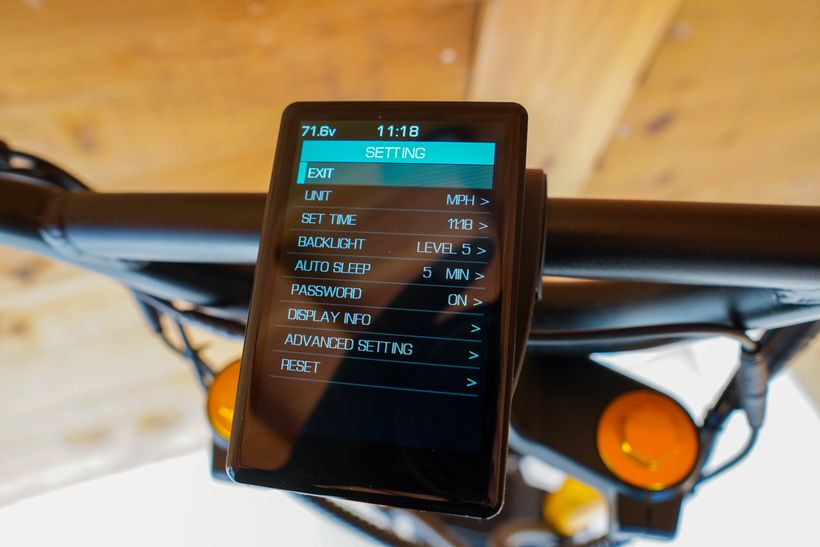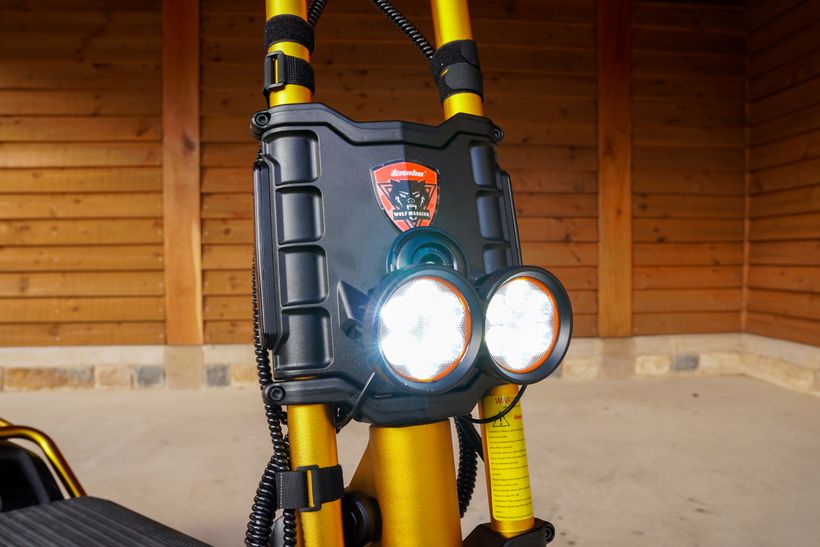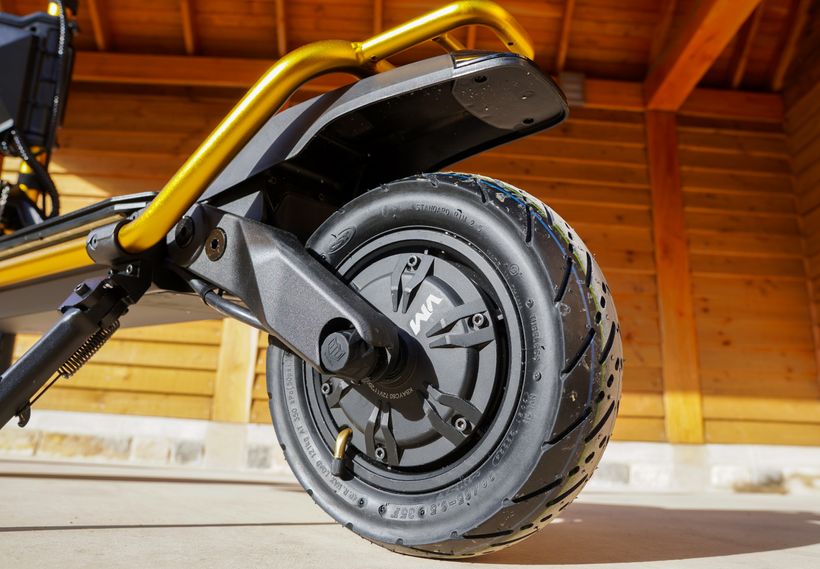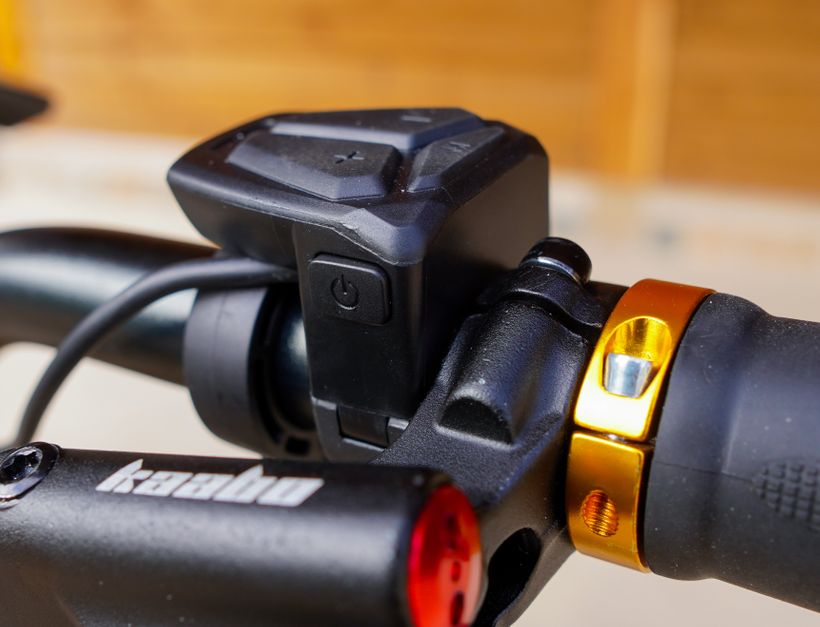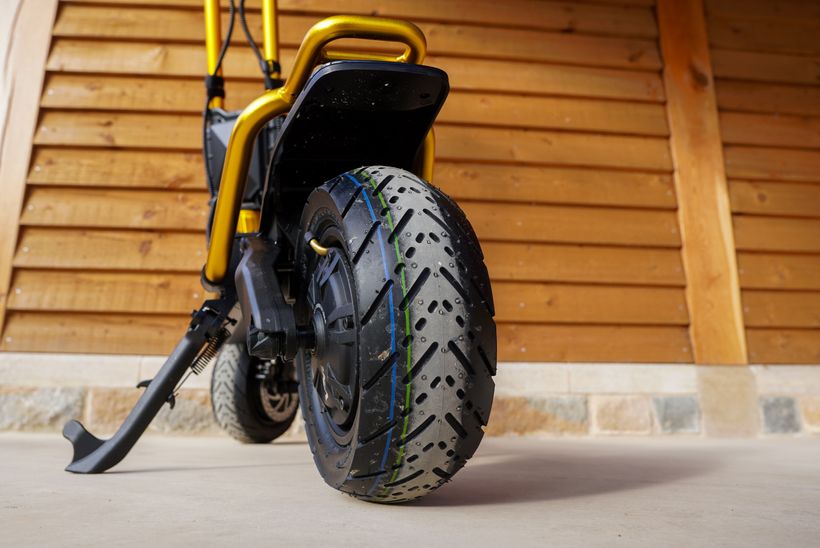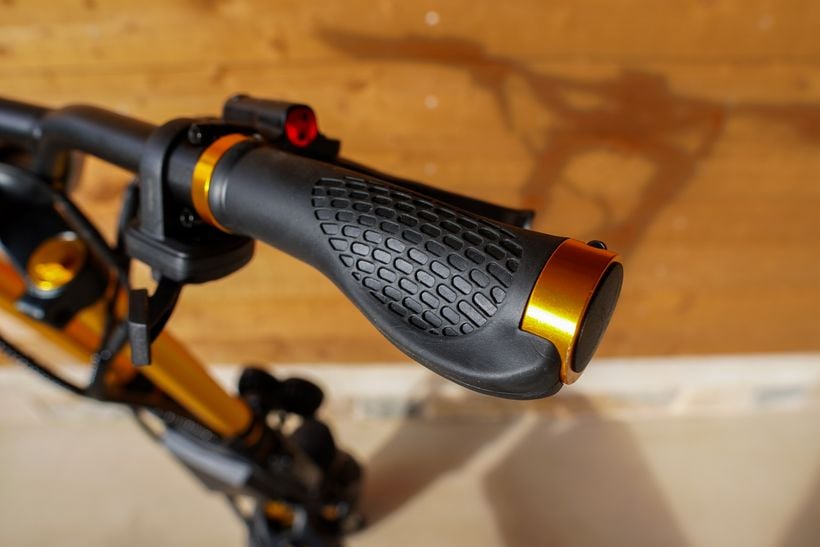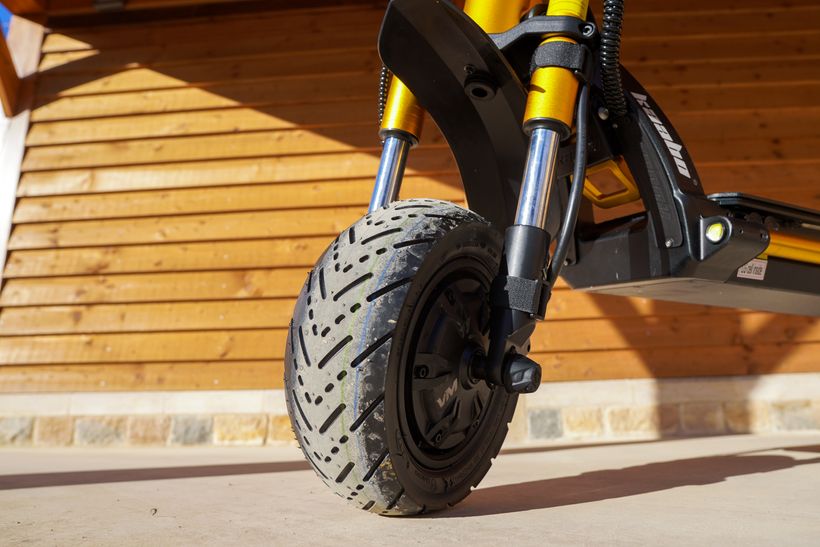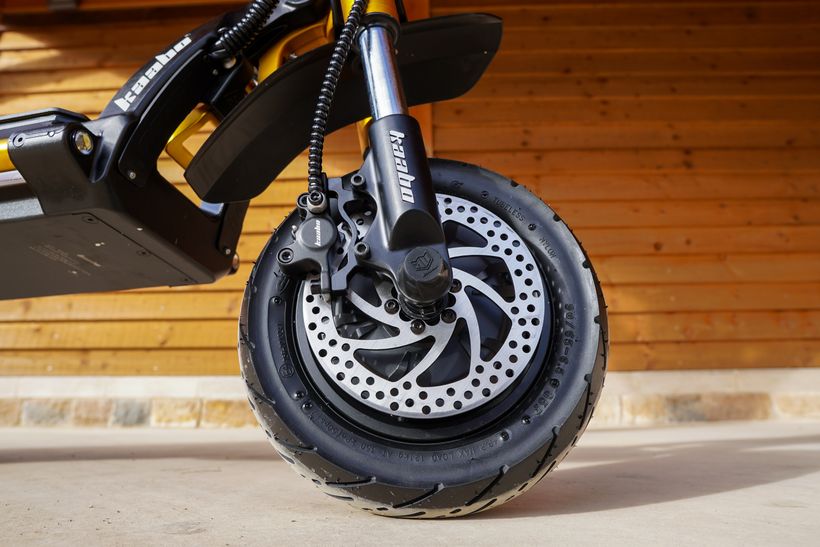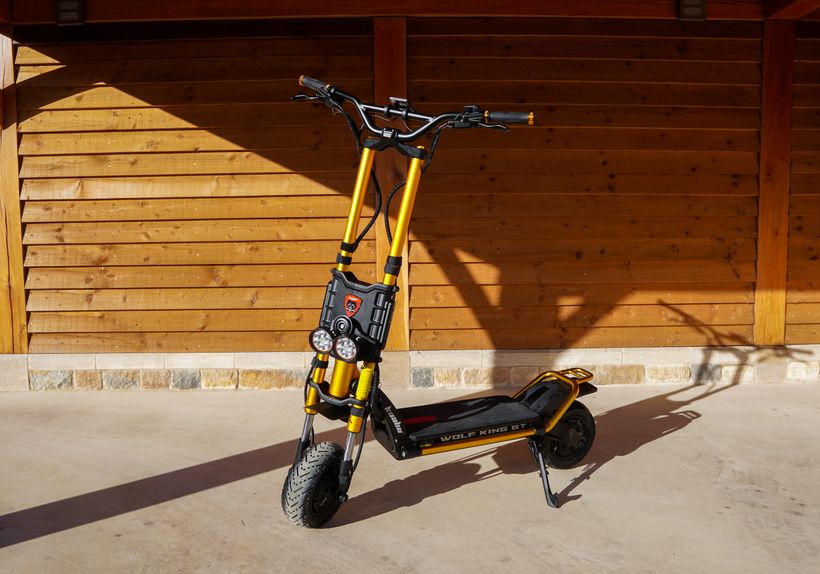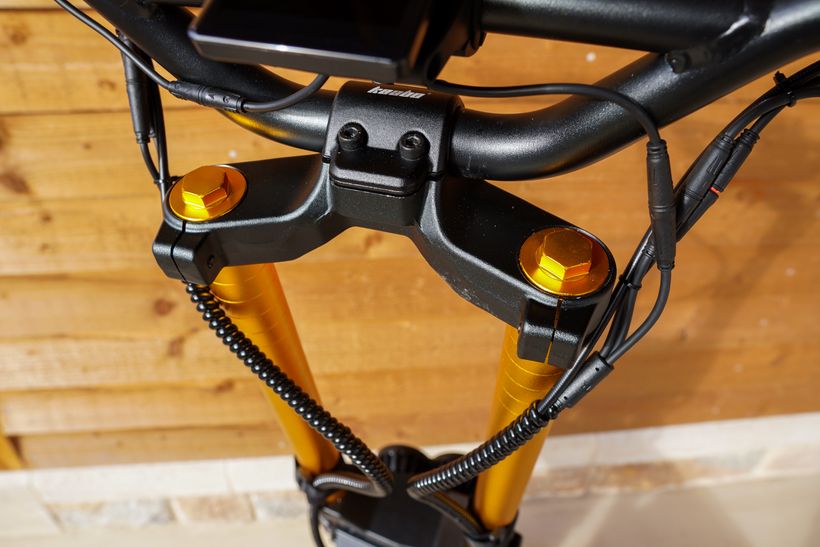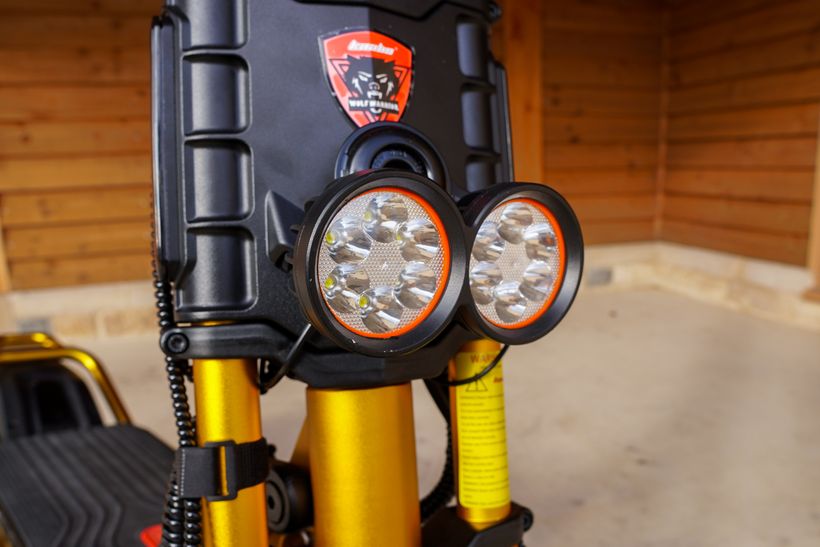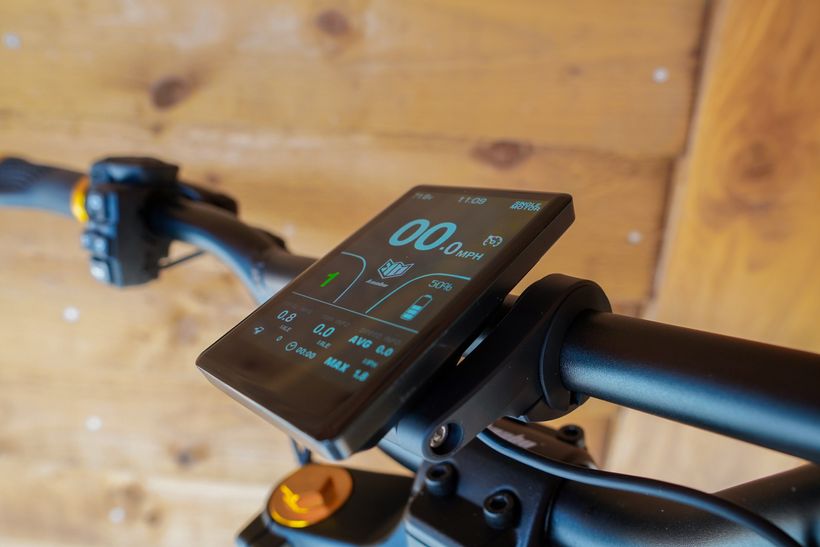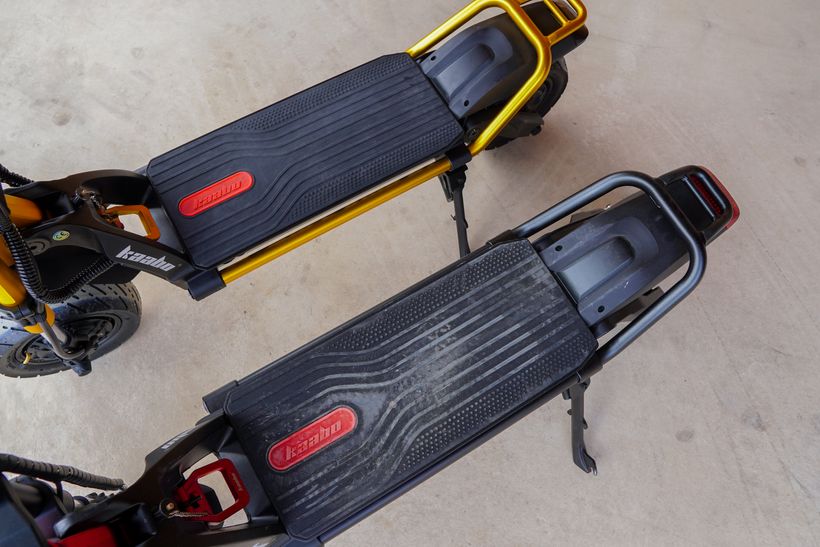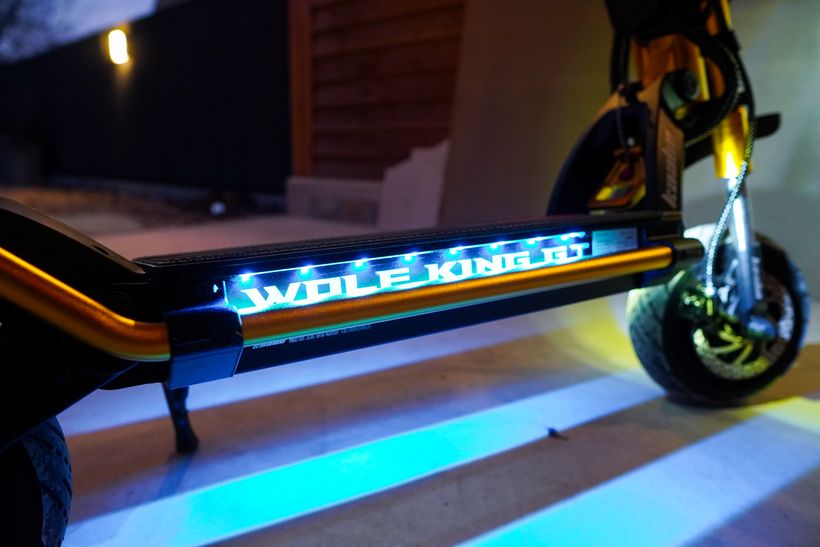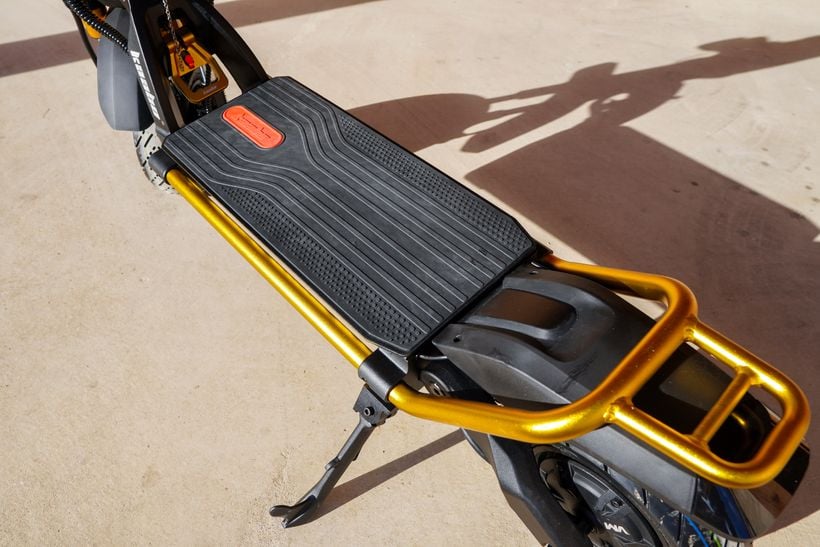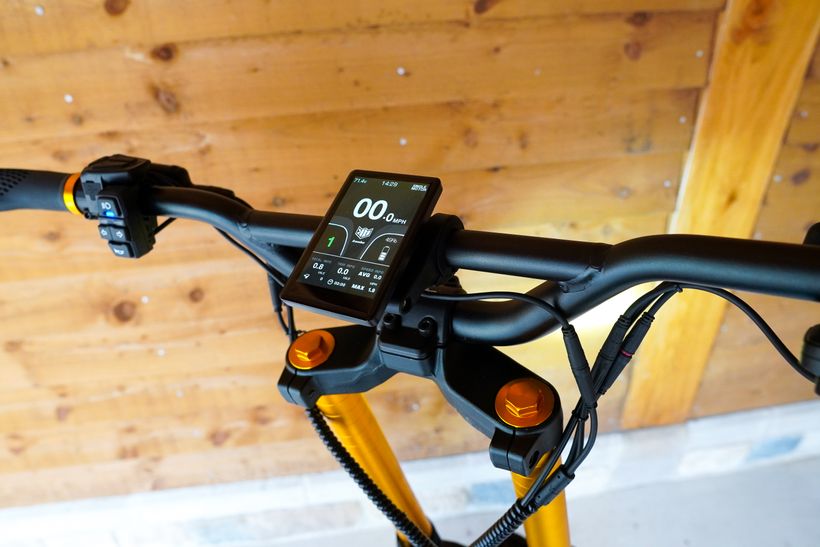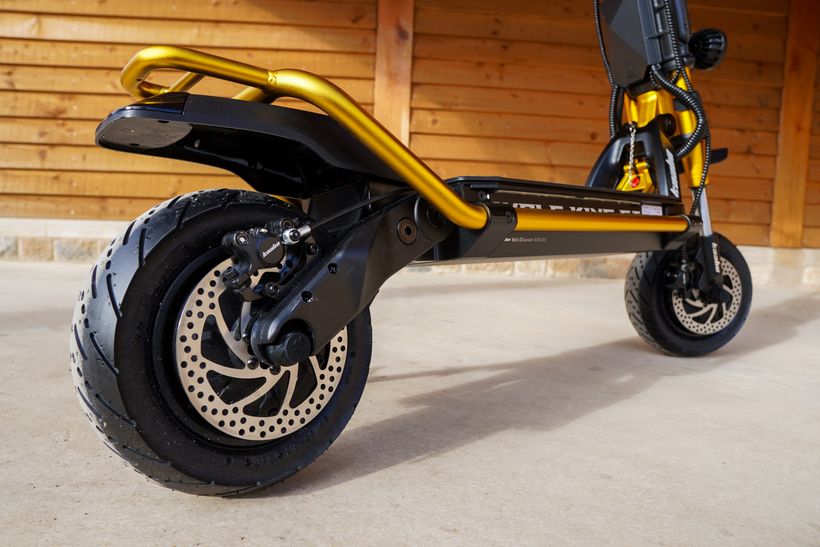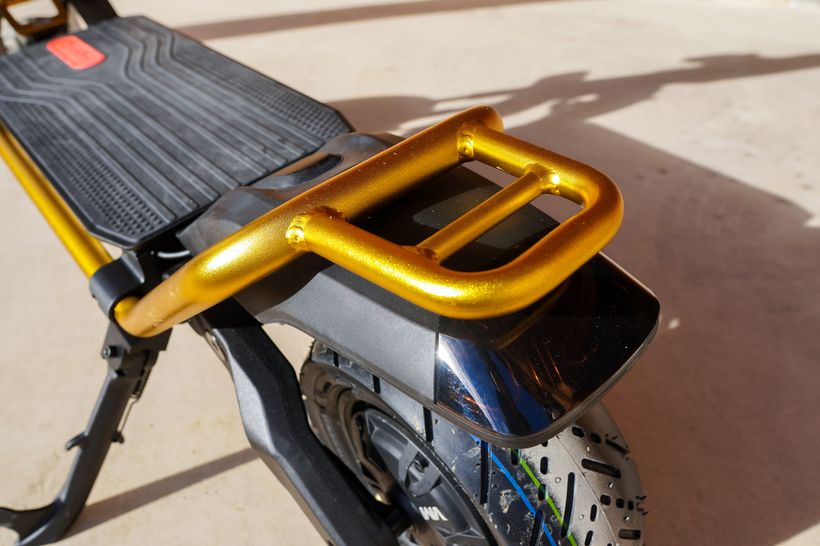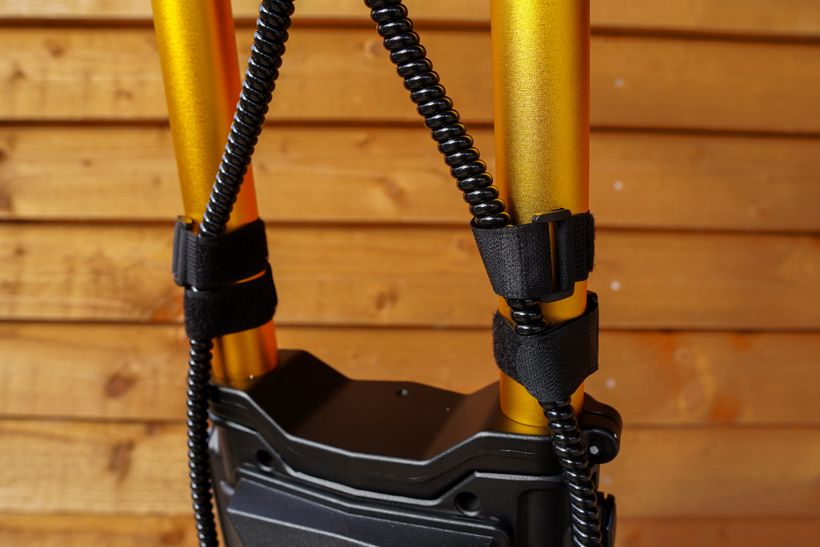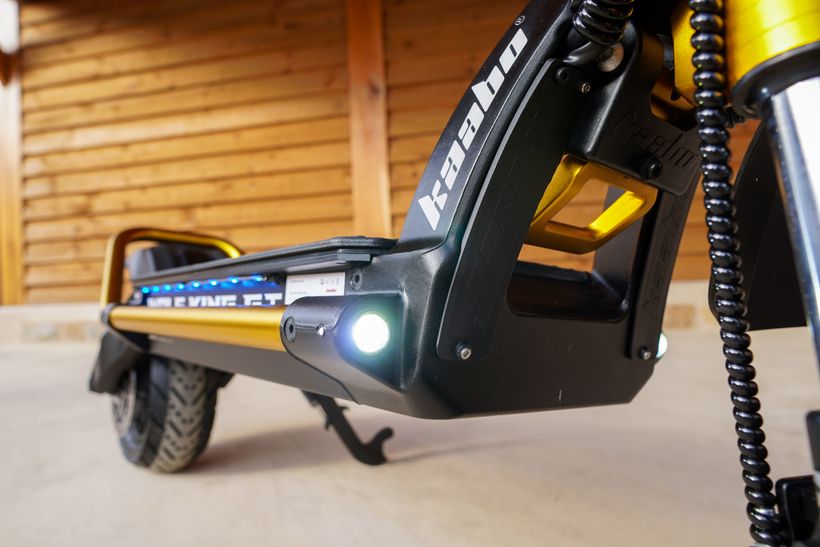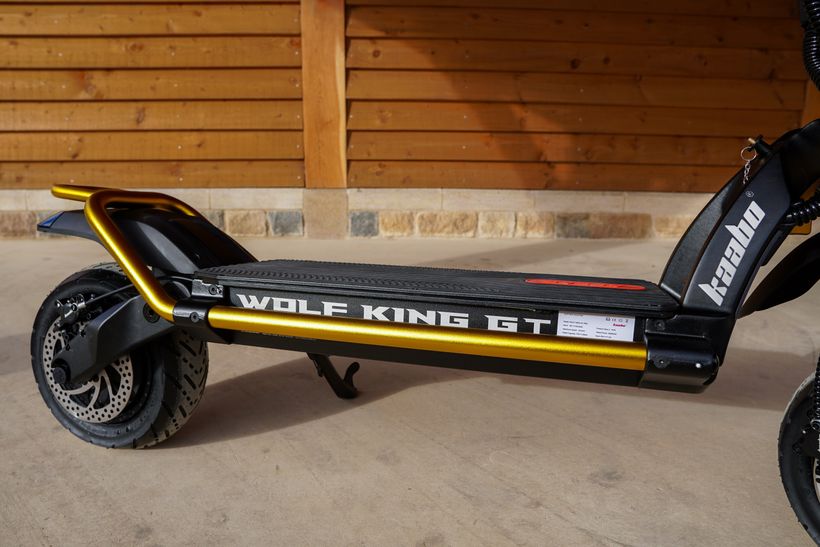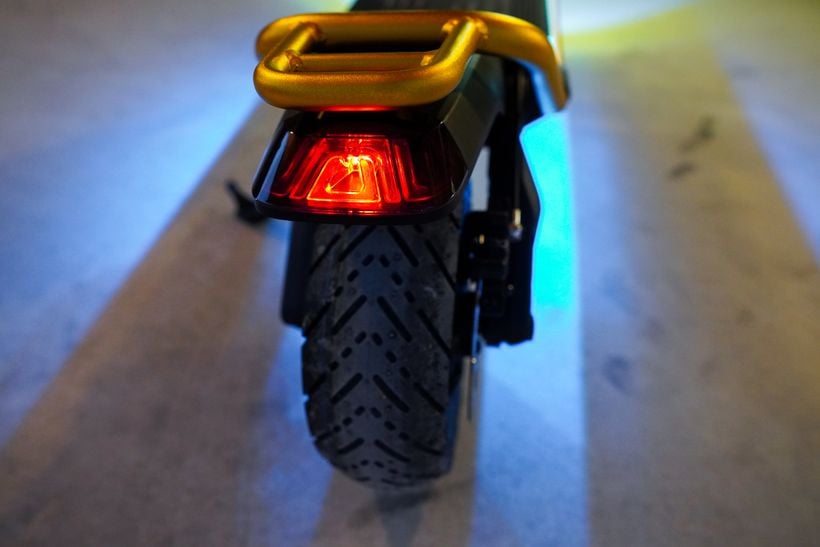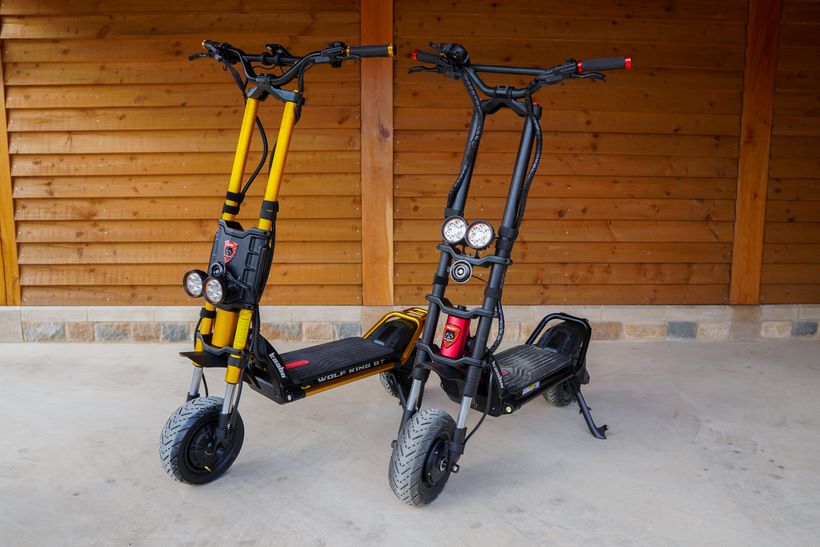Home » Best » Climbing Hills » Top Picks
Top Picks & Comparison: Best Electric Scooters For Climbing Hills (Quick List)
Quick List: Best Electric Scooters For Hills
I tested 30 electric scooters to find the 5 best hill-climbing models.
- SPLACH Mukuta – Best For Moderate Inclines (Best Under $1,500)
- Varla Eagle One V2 – Best For Steep Inclines (Best Under $1,750)
- Apollo City – Best For Moderate Inclines (Best Under $2,000)
- Mantis King GT – Best For Steep Inclines (Best Under $2,500)
- Wolf King GT – Best For Extremely Steep Inclines (Best Under $2,500)
Inclines Ratings:
Moderate (5-10 Degrees) – These electric scooters are suitable for the majority of urban inclines. For context, you’d be able to feel it in your legs if you tried to cycle up one of these.
Steep (10-15 Degrees) – These electric scooters can tackle challenging inclines. Imagine hills that sit in the mid-ground between typical city inclines and those in San Francisco.
Extremely Steep (15+ Degrees) – This is where things get serious. Take, for instance, San Francisco’s Filbert Street (17.5-degrees), or the world’s steepest street, Baldwin Street (19-degree) – no incline is too steep for these electric scooters.
Best Electric Scooters For Climbing Hills
Best Hill Climber Under $1,500
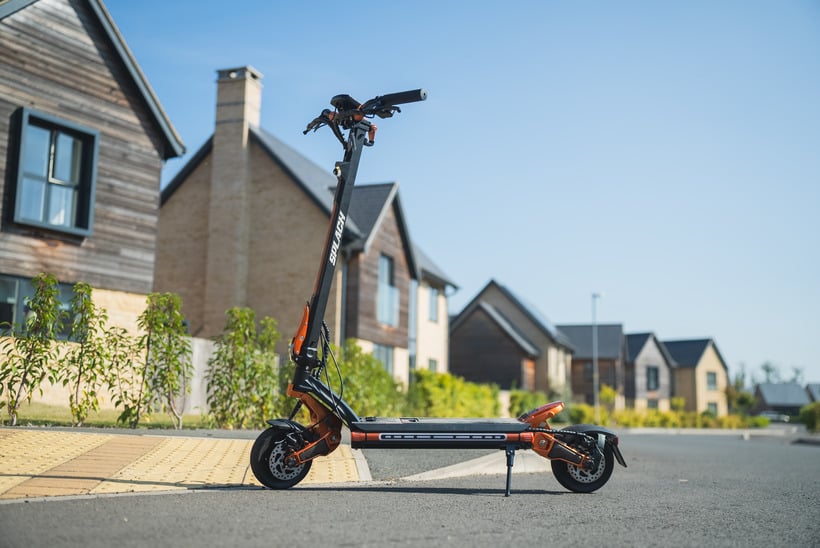
SPLACH Mukuta
- Incline Rating: Moderate
- Max Incline: 22-degrees
- Optimal Incline: 13-degrees* - Learn more
Performance Report
Performance Report:
Tester: Josh Frisby (190 lbs, 6.1 ft)
- Top Speed: 28 mph
- Real Speed: 27 mph*
- 0-15 mph: 2.7 s*
- 0-25 mph: 6.7 s*
- Max Range: 39 miles
- Real Range: 22 miles*
- Braking: 2.1 meters*
- Suspension: 6.5/10*
- Max Incline: 22 degrees
- Optimal Incline: 13 degrees*
- Weight: 66 lbs
- Load: 265 lbs
Pros & Cons
The Good:
- Top contender for the best solid tire electric scooter
- Highly competitive performance profile in its price class
- It offers dual motor performance on a budget
- Detachable battery that doubles as a power bank
- Bright headlight and a strong cast of supporting stem, deck, and turn signal LEDs
- NFC security system
- Puncture-proof tires
- Ergonomic cockpit that’s similar to the vastly more expensive Segway GT2
- Rock solid with no rattling or stem wobble
- Foldable handlebars make it compact
- Adjustable front and rear suspension
- Low maintenance
- IP54 water-resistance rating
The Bad:
- The chrome plastic cockpit controls are tacky
- The toggles to select the riding mode and engage the turn signals would be better if they gave more feedback (i.e more clicky)
- The plastic casing of the stem and deck lights feels a little cheap
- The profile of the tires prevents aggressive cornering
- The hook on the back of the handlebars doesn’t lock to the kickplate, making it difficult to maneuver when folded
- While the turn signals are exceptionally bright, they can’t be seen from the front or rear during the day
- Brake lights only glow brighter, instead of flashing
Video Review
Photos
Best Under $1,750

Varla Eagle One V2
- Incline Rating: Steep
- Max Incline: 30-degrees
- Optimal Incline: 18-degrees* - Learn more
Performance Report
Performance Report:
Tester: Josh Frisby (197 lbs, 6.1 ft)
- Top Speed: 40 mph
- Real Speed: 36.1 mph*
- 0-15 mph: 2.3 s*
- 0-25 mph: 5.8 s*
- 0-30 mph: 9.3 s*
- Max Range: 42 miles
- Real Range: 24.4 miles*
- Braking: 2.0 meters*
- Suspension: 8/10*
- Max Incline: 30 degrees
- Optimal Incline: 18 degrees*
- Weight: 82 lbs
- Load: 330 lbs
Pros & Cons
The Good:
- Top contender in its price class
- Packed full of features
- Extremely well-rounded performance
- Great value for money
- Powerful, yet tameable
- All-terrain powerhouse
- Plush suspension that’s primed for differing terrain
- Handling, control, and maneuverability are all assured
- Throttle response is super smooth thanks to the Sine Wave controllers
- Rock-solid stem thanks to super secure folding mechanism
- Suitable for tall and heavy riders
- Large, bright, and easy-to-read display
- NFC card reader for enhanced security
- Lights are sufficient for night rides
- Sharp and responsive dual hydraulic brakes
- IP54 water resistance rating
The Bad:
- The deck is short, but the well-designed kickplate adds an extra 5.1 inches of space
- The grip tape quickly becomes dirty and is hard to clean
Video Review
Photos
Best Under $2,000

Apollo City Pro
- Incline Rating: Moderate
- Max Incline: 20-degrees
- Optimal Incline: 13-degrees* - Learn more
Performance Report
Performance Report:
Tester: Josh Frisby (190 lbs, 6.1 ft)
- Top Speed: 32 mph
- Real Speed: 31.2 mph*
- 0-15 mph: 2.3 s*
- 0-25 mph: 6.1 s*
- Max Range: 43 miles
- Real Range: 27 miles*
- Braking: 2.1 meters*
- Suspension: 7.5/10*
- Max Incline: 20 degrees
- Optimal Incline: 13 degrees*
- Weight: 65 lbs
- Load: 265 lbs
Pros & Cons
The Good:
- Competitive performance profile
- Fast acceleration
- Smooth power delivery
- Sublime handling
- Sleek aesthetic
- Feature-rich
- Proprietary design ensures top-class build quality
- Tubeless, self-healing tires
- Shock-absorbing triple spring suspension
- Regen brake recharges the battery by up to 10%
- Intuitive folding mechanism
- Good lighting setup with the best turn signals that I’ve tested
- Battery management system ensures long-term performance
- Integrated mobile app for customized performance
- Fast charging
- 10,000 km warranty
- Low maintenance
- Suitable for tall and heavy riders
- High IP66 water-resistance rating
The Bad:
- The display could be brighter
- Similarly priced models go faster, but the Apollo City Pro’s overall package is superior
Video Review
Photos
Best Under $2,500

Mantis King GT
- Incline Rating: Steep / Extremely Steep
- Max Incline: 30-degrees
- Optimal Incline: 18-degrees* - Learn more
Performance Report
Performance Report:
Tester: Josh Frisby (190 lbs, 6.1 ft)
- Top Speed: 43 mph
- Real Speed: 45 mph*
- 0-15 mph: 1.9 s*
- 0-25 mph: 4.0 s*
- 0-30 mph: 5.7 s*
- 0-35 mph: 7.8 s*
- Max Range: 56 miles
- Real Range: 38 miles*
- Braking: 2.1 meters*
- Suspension: 9/10*
- Max Incline: 30 degrees
- Optimal Incline: 18 degrees*
- Weight: 79 lbs
- Load: 265 lbs
Pros & Cons
The Good:
- Best-in-class performance
- Industry-leading design
- Exceptional build and ride quality
- 30A Sine Wave controllers deliver a smooth, fast acceleration
- High-quality Samsung battery
- Adjustable hydraulic suspension
- Terrain-agnostic tires
- Advanced TFT display
- Controllable LED lights
- Superb folding mechanism
- Wide handlebars and ergonomic controls afford excellent control
- Powerful hydraulic brakes
- IPX5 water-resistance rating
The Bad:
- Headlight could be brighter
Video Review
Best Under $3,000
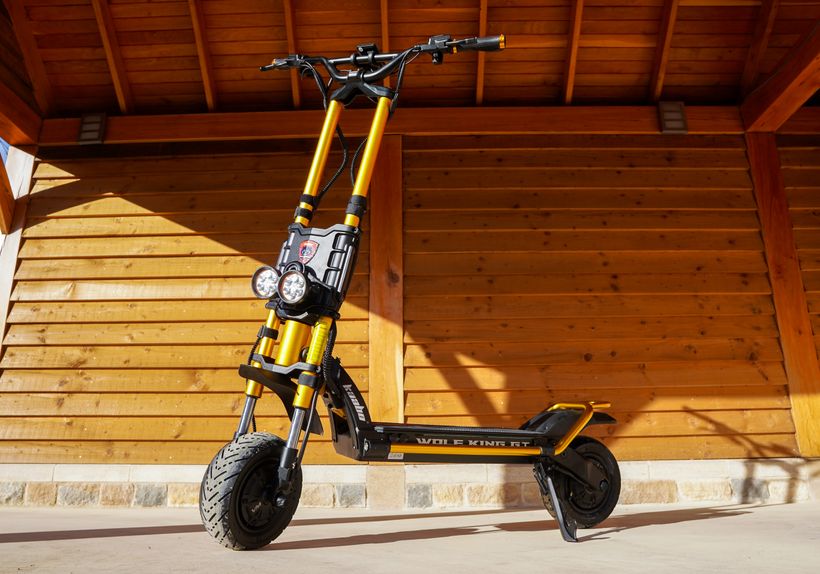
Wolf King GT
- Incline Rating: Extremely Steep
- Max Incline: 50 degrees
- Optimal Incline: 30 degrees* - Learn more
Performance Report
Performance Report:
Tester: Josh Frisby (190 lbs, 6.1 ft)
- Top Speed: 62 mph
- Real Speed: 61 mph**
- 0-15 mph: 1.7 s*
- 0-25 mph: 3.0 s*
- 0-30 mph: 3.8 s*
- 0-35 mph: 4.7 s*
- 0-40 mph: 5.8 s*
- Max Range: 70 miles
- Real Range: 55 miles*
- Braking: 3.0 meters*
- Suspension: 7/10*
- Max Incline: 50 degrees
- Optimal Incline: 30 degrees*
- Weight: 115 lbs
- Load: 330 lbs
*Based on my tests and assessments
**Based on third-party tests
Pros & Cons
The Good:
- Extremely powerful acceleration
- 50A Sine Wave controllers effectively modulate its mighty power
- Dual stem affords unparalleled control at high speeds
- Expansive 29-inch handlebars ensure excellent handling
- Packs enough battery power to ride in its fastest setting for extended journeys
- Anti-locking braking system ensures safety during emergency stops
- Puncture-proof 11-inch tubeless tires
- Motorcycle-grade suspension
- Ergonomic thumb throttle and controls
- Best lighting rig of any scooter
- Bright and information-rich TFT display
- IPX5 water-resistance rating
The Bad:
- Extremely heavy
- Horrible to fold – it gets longer when you collapse it
Video Review
Photos
Compare Electric Scooters For Hills
SPLACH Mukuta | Eagle One V2 | Apollo City Pro | Mantis King GT | Wolf King GT |
|
|---|---|---|---|---|---|
| Where to Buy | SPLACH | Varla | Apollo | Kaabo | Kaabo |
| Price | $999 | $1,41=49 | $1,649 | $1,899 | $2,999 |
| Price Category | Under $1,500 | Under $1,750 | Under $2,000 | Under $2,500 | Under $3,000 |
| Incline Rating | Moderate | Steep | Moderate | Steep / Extremely Steep | Extremely Steep |
| Review | Review | Review | Review | Review | Review |
| Performance | |||||
| Top Speed | 28 mph | 40 mph | 32 mph | 43 mph | 62 mph |
| 0-15 MPH | 2.7 s | 2.3 s | 2.3 s | 1.9 s | 1.7 s |
| 0-25 MPH | 6.7 s | 5.8 s | 6.1 s | 4.0 s | 3.0 s |
| Max Range | 39 miles | 42 miles | 43 miles | 56 miles | 70 miles |
| Tested Range | 22 miles | 24.4 miles | 27 miles | 38 miles | 55 miles |
| Braking | 2.1 meters | 2.0 meters | 2.1 meters | 2.1 meters | 3.0 meters |
| Max Incline | 22 degrees | 30 degrees | 20 degrees | 30 degrees | 50 degrees |
| Optimal Incline | 13 degrees | 18 degrees | 13 degrees | 18 degrees | 30 degrees |
| Specs | |||||
| Motor | 48V 600W (x2) | 52V 1000W (x2) | 48V 500W (x2) | 60V 1100W (x2) | 72V 2000W (x2) |
| Throttle | Twist | Thumb | Thumb | Thumb | Thumb |
| Battery | 48V 15.6Ah FST | 52V 20.8Ah FST | 48V 20Ah FST | 60V 24Ah Samsung | 72V 35Ah LG |
| Charge Time | 8 hours | 10 hours | 4.5 hours | 6 hours | 12 hours |
| Brakes | Discs (x2), Electronic | Hydraulic Discs (x2), Electronic | Drum (x2), Electronic | Hydraulic Discs (x2), Electronic | Hydraulic Discs (x2), Electronic |
| Suspension | Springs, Swingarms | Springs, Swingarms | Triple Springs, Swingarms | Adjust. Hydraulic Springs, Swingarms | Hydraulic Forks, Springs, Swingarms |
| Tire Size | 8 inch | 10 inch | 10 inch | 10 inch | 11 inch |
| Tire Type | Solid (Rubber) | Air (Tubeless) | Air (Tubeless, Self-Healing) | Air (Inner-Tube) | Air (Tubeless) |
| Weight | 66 lbs | 82 lbs | 65 lbs | 79 lbs | 105 lbs |
| Load | 265 lbs | 330 lbs | 265 lbs | 265 lbs | 330 lbs |
| Foldability | Folds at Stem & Handlebars | Folds at Stem | Folds at Stem | Folds at Stem | Folds at Neck |
| IP Rating | IP54 | IP54 | IP66 | IPX5 | IPX5 |
| Lights | Headlight, Stem Strip, Deck LEDs, Taillights, Turn Signals | Headlight, Taillight, Deck | Headlight, Taillight, Turn Signals | Headlight, Taillight, Deck, Customizable RGB, Turn Signals | Dual Headlights, Taillight, Deck, Turn Signals |
| Terrain | Street | Street, Off-Road | Street | Street, Off-Road | Street, Off-Road |
How Did I Test the Scooters?
Test Criteria
To find the 5 best electric scooters for climbing hills, I tested 30 models. Each was evaluated across its maximum and optimal incline rate, motor power (including torque, acceleration, and speed), battery power, and braking performance.
Maximum and Optimal Incline
It’s customary for manufacturers to specify the maximum incline capability of their scooters, but this doesn’t mean that they’ll perform optimally at those incline rates.
For instance, if a scooter has a maximum 20-degree incline rate, it may be able to reach this, but it’s highly likely that once it ventures beyond 12 degrees it’ll become progressively slower. With this in mind, it’s important to level up the power that you need to ensure that you can effectively scale hills. This was taken into account during the tests and selection process.
Based on my independent test data, optimal incline performance is typically 60% of the maximum.
It's also worth noting that some retailers use either degrees or percentages to indicate hill-climbing ability. However, it’s important to not get these mixed up. The percent figure can be misleading – for example, a 20% incline rating is very different from a 20-degree rating. Here, the 20% grade equates to 12 degrees.
Motor Power (Torque, Acceleration and Speed)
Following my extensive tests, it was clear that the top-performing scooters had powerful dual motors. After all, scaling inclines require considerable torque, acceleration, and speed. So, to report on this I employed a series of tests and assessments.
First on the agenda was motor power. Here, I assessed the voltage and watts of each scooter.
Voltage indicated the intensity at which electricity was being pushed through the motors, while watts determined the amount of power that the motors could produce. The higher the voltage, the greater the torque and acceleration, and the higher the watts, the greater the top speed.

Together, each scooter’s voltage and watts played important roles in their ability to scale slopes of varying inclines.
Taking this analysis a step further, I reported on nominal and peak power outputs, as well as top speed and acceleration.

Most notably, I tested each scooter’s acceleration from 0-15 mph and 0-25 mph since these are the most crucial intervals – especially when climbing from a standstill.
To do this, the scooters were subject to 3x two-way directional runs for each interval. Following this, the results were averaged. To ensure consistency, zero-start modes were enabled, the performance settings were dialed up to the max, the tires were pumped up to their recommended PSI, and the batteries were fully charged.
Battery Power
Battery power is just as important as motor power when it comes to conquering hills. To determine the amount of energy stored in each scooter’s battery, I reported on three key metrics: voltage (V), amp-hours (Ah), and watt-hours (Wh).
The voltage of a battery signifies the strength of its electrical charge. Amp-hours refer to how much electricity can be funneled to the motors and other electrical components in an hour. And last, but by no means least, watt-hours are used to measure battery capacity – it’s calculated by multiplying the voltage and amp-hours together.
Typically, the higher the voltage, amp-hours, and watt-hours, the larger the battery, and the better the scooter’s ability to tackle hills.

Taking this a step further, I reported on maximum and real-world range. Although manufacturers list maximum range figures, these are often based on a 165 lb rider, flat terrain, and riding in the slowest setting. To give a more accurate insight into performance, I detailed how each performed under real-world conditions – including undulating environments, my 190 lb weight, periods of fast acceleration, cruising, and multiple stops.
I also paid particular attention to each scooter’s battery management system by assessing how their protection features ensured the healthy and safe operation of their power delivery (i.e. protection against over-voltage, low-voltage, over-discharge, over-current, and over-temperature).

Stopping Power
The last thing that anyone wants is a scooter that rolls down a hill uncontrollably. This could spell disaster, so a strong set of brakes is a must.
To test braking performance, I measured the distance that it took each model to stop from a speed of 15 mph.

Based on my many braking tests, stopping distances can be interpreted as follows: Excellent (less than 2.5 meters), Very Good (2.5 – 3.0 meters), Good (3.0 – 3.5 meters), Fair (3.5 – 4.0 meters), and Poor (more than 4.0 meters).
In the interest of safety, I selected the scooters that achieved stopping distances of 3.5 meters or less. I also assessed the position and responsiveness of the brake levers.

